Saturday, October 28 2023
 How do authors fix a SAGGING MIDDLE? Or for that matter, what IS a sagging middle? For the uninitiated, a sagging middle is when you suddenly feel like you're slogging through mud. Nothing interesting is happening and you feel like tossing the book aside and finding something else to read. Some authors never figure this out based on reviews that suggest the book dragged and readers lost interest. But even good authors, best-selling and award-winning authors don’t always find it an easy thing to get past the anchor someone just threw out. Hammocks have sagging middles for a reason – to make you comfy enough to fall asleep. Not what an author is aiming for. How do authors fix a SAGGING MIDDLE? Or for that matter, what IS a sagging middle? For the uninitiated, a sagging middle is when you suddenly feel like you're slogging through mud. Nothing interesting is happening and you feel like tossing the book aside and finding something else to read. Some authors never figure this out based on reviews that suggest the book dragged and readers lost interest. But even good authors, best-selling and award-winning authors don’t always find it an easy thing to get past the anchor someone just threw out. Hammocks have sagging middles for a reason – to make you comfy enough to fall asleep. Not what an author is aiming for.
XX
 We all start off our books fired up with this new, fantastic book idea. We might have been inspired by something that happened to us or someone we knew, or even events of the day that capture the interest of the whole country or the world. And it seems like a sure-fire novel idea. We might have created characters we absolutely love and thrown them into a cauldron of hot water to start off with a bang. But suddenly, halfway through the water is only tepid. Our characters are still loveable, but maybe not as heroic as we thought. Maybe they are kicked back in their loungers, thumbing their noses as us saying, “I fixed my problem so I’m just going to retire now. Your turn.” Or maybe the premise itself began to have a lackluster feel to it. So, now what? We all start off our books fired up with this new, fantastic book idea. We might have been inspired by something that happened to us or someone we knew, or even events of the day that capture the interest of the whole country or the world. And it seems like a sure-fire novel idea. We might have created characters we absolutely love and thrown them into a cauldron of hot water to start off with a bang. But suddenly, halfway through the water is only tepid. Our characters are still loveable, but maybe not as heroic as we thought. Maybe they are kicked back in their loungers, thumbing their noses as us saying, “I fixed my problem so I’m just going to retire now. Your turn.” Or maybe the premise itself began to have a lackluster feel to it. So, now what?
XX
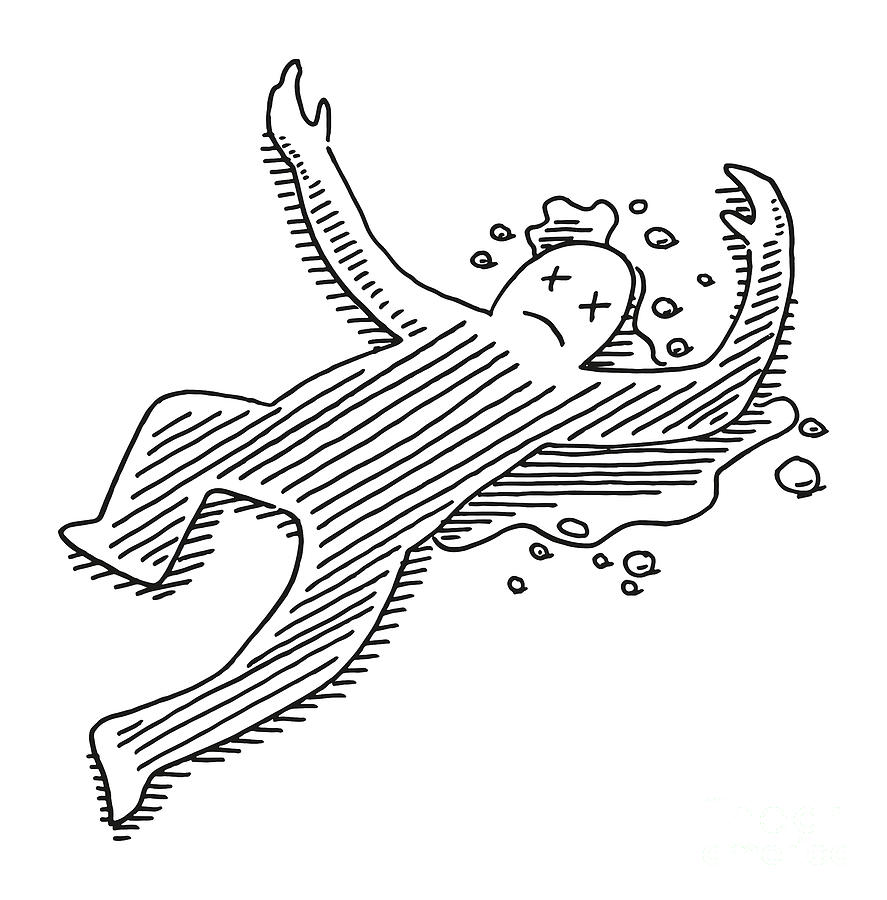 When you’re writing a mystery, or suspense, the old saw when you hit a sagging middle is to kill someone. Another dead body is always good for jump-starting a stalled-out mystery, and it worked well for me, the pantser dealing with an unplotted mystery. I killed off my only witness and it added a ton of stress for my heroine and conflict for the story. Of course, you might be writing a romance where, presumably, there are no dead bodies. Just a dead romance. Or maybe it’s a suspense with the suspense suspended? How do we fix a sagging middle. When you’re writing a mystery, or suspense, the old saw when you hit a sagging middle is to kill someone. Another dead body is always good for jump-starting a stalled-out mystery, and it worked well for me, the pantser dealing with an unplotted mystery. I killed off my only witness and it added a ton of stress for my heroine and conflict for the story. Of course, you might be writing a romance where, presumably, there are no dead bodies. Just a dead romance. Or maybe it’s a suspense with the suspense suspended? How do we fix a sagging middle.
XX
That new dead body is actually upping the stakes, which is one of the ways to fix a sagging middle in any story. Other options are adding a twist, a set-back, new action or cutting details, scenes and stuff you loved, but realize are going nowhere.
XX
 Let’s start with the last thing I listed – cutting. We do love our babies and sometimes we fall so in love with our words we don’t want to cut anything. But there are times when the neatly crafted stuff we have is going nowhere, does not drive the plot forward and detracts from the plot and the character’s quest. If you can say yes to any of those, it’s time to cut. I often save cut scenes and sections to a separate file folder because it might be perfect somewhere else, perhaps later in the book or even in a totally different book. Let’s start with the last thing I listed – cutting. We do love our babies and sometimes we fall so in love with our words we don’t want to cut anything. But there are times when the neatly crafted stuff we have is going nowhere, does not drive the plot forward and detracts from the plot and the character’s quest. If you can say yes to any of those, it’s time to cut. I often save cut scenes and sections to a separate file folder because it might be perfect somewhere else, perhaps later in the book or even in a totally different book.
XX
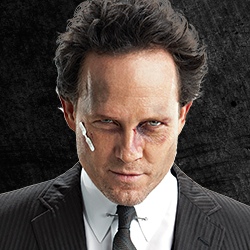 A set-back is another good way to generate tension. I have a brainstorming partner I call my personal mayhem because she comes up with the most awful things that could happen to my babies. I love my characters and tend to want to protect them from getting hurt so I really appreciate Mayhem’s ideas to get me focused on keeping the tension going in my story. If everything is going too smoothly for my protagonist, it’s time to throw a monkey wrench into her life and shake things up. Your heroine might have the best float ever and this year she just knows she will win best in the parade – so perhaps what’s moving that float breaks down. Or the homecoming Queen who was supposed to ride on it looking beautiful and waving to the folk along the parade route gets sick. When everything is going right for your hero or heroine, something needs to hit a snag. A set-back is another good way to generate tension. I have a brainstorming partner I call my personal mayhem because she comes up with the most awful things that could happen to my babies. I love my characters and tend to want to protect them from getting hurt so I really appreciate Mayhem’s ideas to get me focused on keeping the tension going in my story. If everything is going too smoothly for my protagonist, it’s time to throw a monkey wrench into her life and shake things up. Your heroine might have the best float ever and this year she just knows she will win best in the parade – so perhaps what’s moving that float breaks down. Or the homecoming Queen who was supposed to ride on it looking beautiful and waving to the folk along the parade route gets sick. When everything is going right for your hero or heroine, something needs to hit a snag.
XX
 If any of you has watched many of the Hallmark movies you get the idea that each new setting is bucolic and peaceful, small towns where there’s little dissent and all is right with the world. And maybe that’s what folks who tune into these movies want, but some of us want more. That’s when the twist comes in. Not everything is as it seams. Perhaps there’s an undercurrent in this wonderful small town that didn’t appear at first. Like that Grinch perched above Whoville with his plans to steal Christmas. Cindy-Lou Who and all the rest of the Whos in Whoville are happily anticipating a wonderful Christmas, but the watcher sees that evil Grinch and knows what’s coming and that knowing adds the tension. If any of you has watched many of the Hallmark movies you get the idea that each new setting is bucolic and peaceful, small towns where there’s little dissent and all is right with the world. And maybe that’s what folks who tune into these movies want, but some of us want more. That’s when the twist comes in. Not everything is as it seams. Perhaps there’s an undercurrent in this wonderful small town that didn’t appear at first. Like that Grinch perched above Whoville with his plans to steal Christmas. Cindy-Lou Who and all the rest of the Whos in Whoville are happily anticipating a wonderful Christmas, but the watcher sees that evil Grinch and knows what’s coming and that knowing adds the tension.
XX
 Hallmark movies are also tediously predictable: Someone left town years ago planning never to return, but here they are for one reason or another and faced not only with whatever brought them home in the first place, but also with the love they had in high school who they left behind. And somehow that love is never happily married which means they can pick up where they left off. And it’s a romance so we know they’ll figure out what went wrong and find a way to fix it. And we all know there will be a happy ever after. But in our own writing, we want more. We don’t want our readers to know the plot is going to work itself out. So, it’s time for a twist. A betrayal from someone your protagonist trusted or was counting on to be in their corner. Or it might only appear to be a betrayal -- just don’t let the deception be too easily fixed. Hallmark movies are also tediously predictable: Someone left town years ago planning never to return, but here they are for one reason or another and faced not only with whatever brought them home in the first place, but also with the love they had in high school who they left behind. And somehow that love is never happily married which means they can pick up where they left off. And it’s a romance so we know they’ll figure out what went wrong and find a way to fix it. And we all know there will be a happy ever after. But in our own writing, we want more. We don’t want our readers to know the plot is going to work itself out. So, it’s time for a twist. A betrayal from someone your protagonist trusted or was counting on to be in their corner. Or it might only appear to be a betrayal -- just don’t let the deception be too easily fixed.
XX
 Action is always good for a jump-start. If it’s a suspense or adventure, action is a given anyway, but even something as simple as an argument between your protagonist and another important character can interrupt what was going smoothly. Maybe an uninvited guest shows up at the most inopportune moment. Or a faucet broke and suddenly the whole house is in mayhem trying to find a plumber on a weekend because your protagonist is a real estate salesman who was prepping for an open house. Action is always good for a jump-start. If it’s a suspense or adventure, action is a given anyway, but even something as simple as an argument between your protagonist and another important character can interrupt what was going smoothly. Maybe an uninvited guest shows up at the most inopportune moment. Or a faucet broke and suddenly the whole house is in mayhem trying to find a plumber on a weekend because your protagonist is a real estate salesman who was prepping for an open house.
XX
 And last, but certainly not least – up the stakes. Add another problem. Add a time crunch. Maybe your detective is about to break the case, certain who the killer is, but is tying things together to get enough to nail them and make an arrest -- and someone else goes missing. Maybe there’s an abduction and there’s a ransom demand. Or your protagonist’s plans were going along very nicely, and someone changed the deadline for their project. If your hero or heroine thinks they have a week before something important is going to happen and suddenly, they find they have only two days, that seriously ups the ante and puts them in tension. And last, but certainly not least – up the stakes. Add another problem. Add a time crunch. Maybe your detective is about to break the case, certain who the killer is, but is tying things together to get enough to nail them and make an arrest -- and someone else goes missing. Maybe there’s an abduction and there’s a ransom demand. Or your protagonist’s plans were going along very nicely, and someone changed the deadline for their project. If your hero or heroine thinks they have a week before something important is going to happen and suddenly, they find they have only two days, that seriously ups the ante and puts them in tension.
XX
 However you choose to fix your sagging middle, just keep the mantra in mind that you can’t solve the character’s problems too early in the story, otherwise there’s no reason for the reader to keep reading. Like those Hallmark movies – I turn them on when I’m wrapping Christmas gifts or sewing them – because it’s fun to have something I don’t have to concentrate too hard to follow and if I need to leave in the middle, I already know how it’s going to end so I don’t miss much. Your stories need to avoid that – you need your reader glued to every page until that very last moment when all is solved, and all is now right in your character’s world – and, of course, the reader needs to leave satisfied and glad they spent the money and the time on your book. However you choose to fix your sagging middle, just keep the mantra in mind that you can’t solve the character’s problems too early in the story, otherwise there’s no reason for the reader to keep reading. Like those Hallmark movies – I turn them on when I’m wrapping Christmas gifts or sewing them – because it’s fun to have something I don’t have to concentrate too hard to follow and if I need to leave in the middle, I already know how it’s going to end so I don’t miss much. Your stories need to avoid that – you need your reader glued to every page until that very last moment when all is solved, and all is now right in your character’s world – and, of course, the reader needs to leave satisfied and glad they spent the money and the time on your book.
XX
 Now, let's go see how some of my fellow Round Robin Bloggers fix their sagging middles: Now, let's go see how some of my fellow Round Robin Bloggers fix their sagging middles:
XX
Dr. Bob Rich https://wp.me/p3Xihq-322
Anne Stenhouse http://annestenhousenovelist.wordpress.com
Connie Vines http://mizging.blogspot.com/
Diane Bator http://dbator.blogspot.ca/
Helena Fairfax http://www.helenafairfax.com/blog
Friday, September 15 2023
 My first reaction to this topic of uncommon themes was fantasy or sci-fi, genres I’ve not approached, either in reading or writing, so I wasn’t sure how to respond. But then I realized even in our familiar world, there are unfamiliar themes. Most of us aren’t cops or doctors or spies and yet, we get drawn into those worlds despite what we don’t know and aren’t familiar with. So, how does a writer intrigue a reader enough to step into an unfamiliar world? My first reaction to this topic of uncommon themes was fantasy or sci-fi, genres I’ve not approached, either in reading or writing, so I wasn’t sure how to respond. But then I realized even in our familiar world, there are unfamiliar themes. Most of us aren’t cops or doctors or spies and yet, we get drawn into those worlds despite what we don’t know and aren’t familiar with. So, how does a writer intrigue a reader enough to step into an unfamiliar world?
XX
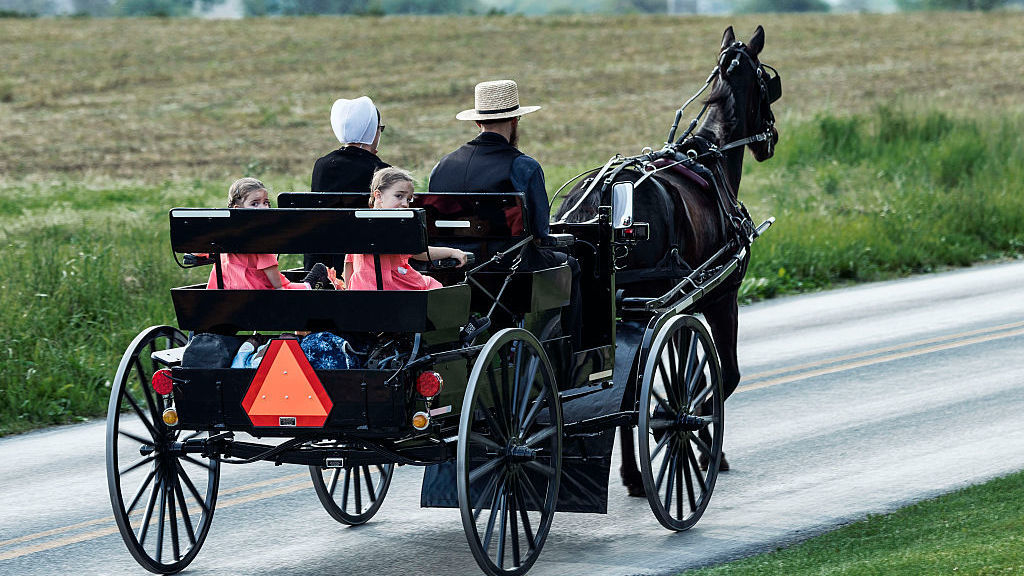 Currently Amish settings are quite popular, especially in romance, and the author must pull the reader into this oddly different, yet current world. In this case, it’s a world without many of our familiar forms of communication or transportation. Making that world attractive is what pulls a reader in to care about the people who live and fall in love there. And critical to making that world attractive are characters the reader must care about the characters wherever they live. Currently Amish settings are quite popular, especially in romance, and the author must pull the reader into this oddly different, yet current world. In this case, it’s a world without many of our familiar forms of communication or transportation. Making that world attractive is what pulls a reader in to care about the people who live and fall in love there. And critical to making that world attractive are characters the reader must care about the characters wherever they live.
XX
The Hallmark channel has done this with all its Christmas movies. Most of us don’t live in that kind of town in this century where everyone  knows everyone, and everyone seems to mind everyone else’s business. So, how do their writers make viewers who thrive on the hustle and anonymity of city life care? It’s a common trope – one of the main characters is almost always someone who has a busy, rewarding life in a big city, and for one reason or another, has returned to the small town they grew up in and couldn’t wait to get out of years before. Yet, while that character has every intention of going back to the life they put on hold while they dealt with whatever issue brought them home, the people, the life, the memories of what once was begins to eat away at that plan. While the character is being beguiled by the small-town life, so is the watcher, or reader. knows everyone, and everyone seems to mind everyone else’s business. So, how do their writers make viewers who thrive on the hustle and anonymity of city life care? It’s a common trope – one of the main characters is almost always someone who has a busy, rewarding life in a big city, and for one reason or another, has returned to the small town they grew up in and couldn’t wait to get out of years before. Yet, while that character has every intention of going back to the life they put on hold while they dealt with whatever issue brought them home, the people, the life, the memories of what once was begins to eat away at that plan. While the character is being beguiled by the small-town life, so is the watcher, or reader.
XX
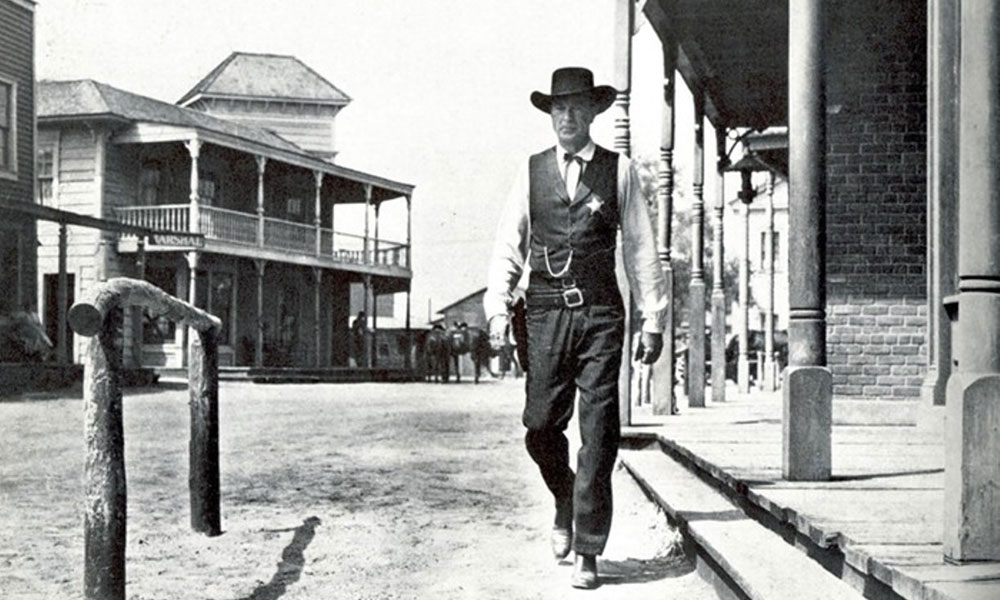 Writers of westerns are faced with a whole different set of aspects, many of which are not all that appealing. The hard-scrabble grit of real life in a western town of a hundred and fifty years ago could be a real turn-off. A posse riding out to catch a bad guy seems exciting. The arrival of the stagecoach has so much potential. But the realities of riding heard on cattle going to market, or the back-breaking toil of farm life before the advent of modern machinery – not so much. Authors need to make readers gloss over the unpleasant and focus on the exciting, heartwarming, rewarding aspects of that era. And again, it’s the characters who are going to hook the readers. If the local sheriff complains about the realities of the outhouse, the reader isn’t going to care. If the heroine moans about doing laundry by hand, she isn’t going to get nearly the audience that she will if we see her carefully sewing her wedding dress – by hand. Writers of westerns are faced with a whole different set of aspects, many of which are not all that appealing. The hard-scrabble grit of real life in a western town of a hundred and fifty years ago could be a real turn-off. A posse riding out to catch a bad guy seems exciting. The arrival of the stagecoach has so much potential. But the realities of riding heard on cattle going to market, or the back-breaking toil of farm life before the advent of modern machinery – not so much. Authors need to make readers gloss over the unpleasant and focus on the exciting, heartwarming, rewarding aspects of that era. And again, it’s the characters who are going to hook the readers. If the local sheriff complains about the realities of the outhouse, the reader isn’t going to care. If the heroine moans about doing laundry by hand, she isn’t going to get nearly the audience that she will if we see her carefully sewing her wedding dress – by hand.
XX
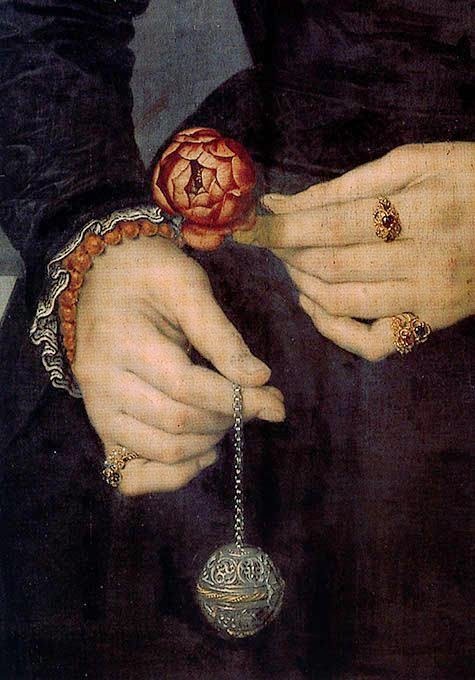 Historical novels of all eras tend to gloss over the less pleasant realities of their time. For most of us in today’s world, daily showers or baths are a way of life, but not that long ago, people were fortunate to bathe once a week. My dad once told me of a fellow worker he knew when he was young man who sewed himself into his long underwear in the fall and didn’t take them off until spring. Can’t imagine he smelled all that enticing, but he wouldn’t have been alone in traveling about with his own little cloud of odor following him everywhere. But that’s what folk in the 17th century used pomander balls for – hollow balls worn on ribbons about the neck and filled with spices to cover up the unpleasant odors. Trips to an outhouse in the middle of the night, especially in winter with frost on the seat and a cold wind howling down your back is hardly likely to hook any reader into caring much except to thank God they don’t live that way. Historical novels of all eras tend to gloss over the less pleasant realities of their time. For most of us in today’s world, daily showers or baths are a way of life, but not that long ago, people were fortunate to bathe once a week. My dad once told me of a fellow worker he knew when he was young man who sewed himself into his long underwear in the fall and didn’t take them off until spring. Can’t imagine he smelled all that enticing, but he wouldn’t have been alone in traveling about with his own little cloud of odor following him everywhere. But that’s what folk in the 17th century used pomander balls for – hollow balls worn on ribbons about the neck and filled with spices to cover up the unpleasant odors. Trips to an outhouse in the middle of the night, especially in winter with frost on the seat and a cold wind howling down your back is hardly likely to hook any reader into caring much except to thank God they don’t live that way.
XX
 So, I’ve mentioned a few of the less pleasant aspects to our historical past that writers of historical fiction have to work around. And I’m sure you’ve already guessed how we deal with them – we don’t even mention them. Instead, we mention the grandeur of the castle, the triumph of successfully bringing in the harvest, the coziness of a roaring fire in a ranch or great hall, the beautiful gowns, the courtliness of the society and chivalrous knights. Those are the things that hook the reader and keep them reading. So, I’ve mentioned a few of the less pleasant aspects to our historical past that writers of historical fiction have to work around. And I’m sure you’ve already guessed how we deal with them – we don’t even mention them. Instead, we mention the grandeur of the castle, the triumph of successfully bringing in the harvest, the coziness of a roaring fire in a ranch or great hall, the beautiful gowns, the courtliness of the society and chivalrous knights. Those are the things that hook the reader and keep them reading.
XX
 War is another world most of us, thank God, have never had to experience firsthand and those that have rarely talk about the horrors of it, so novels set in wartime have a faithful following of readers, who revel in the glory of winning the good fight and putting the enemy down. But if the writer wants to hook new readers, they have to make them care about who is doing the fighting, the suffering, and the dying. To do, that they tap into emotions we can all relate to: fear, love, hate, triumph, and sensations we’ve all experienced: bitter cold, reviving warmth, the scent of roasting food, the stench of things burning that shouldn’t be burning, the sound of footsteps, be they threatening or welcome. By using all the senses, the writer can put the reader right smack into the scene even if it’s one they personally have never been in, and in doing so make them care about the characters who people this unfamiliar world. War is another world most of us, thank God, have never had to experience firsthand and those that have rarely talk about the horrors of it, so novels set in wartime have a faithful following of readers, who revel in the glory of winning the good fight and putting the enemy down. But if the writer wants to hook new readers, they have to make them care about who is doing the fighting, the suffering, and the dying. To do, that they tap into emotions we can all relate to: fear, love, hate, triumph, and sensations we’ve all experienced: bitter cold, reviving warmth, the scent of roasting food, the stench of things burning that shouldn’t be burning, the sound of footsteps, be they threatening or welcome. By using all the senses, the writer can put the reader right smack into the scene even if it’s one they personally have never been in, and in doing so make them care about the characters who people this unfamiliar world.
XX
Another way a writer of historical novels captivates the reader is with an inside peek at the things that brought us to where we are today. Whether it’s the politics of another era, the empire building of the Romans, or the English and Spanish that followed, or the formation of our own democracy, having a glimpse of the things that made those eras grand can capture a reader’s attention and keep them reading.
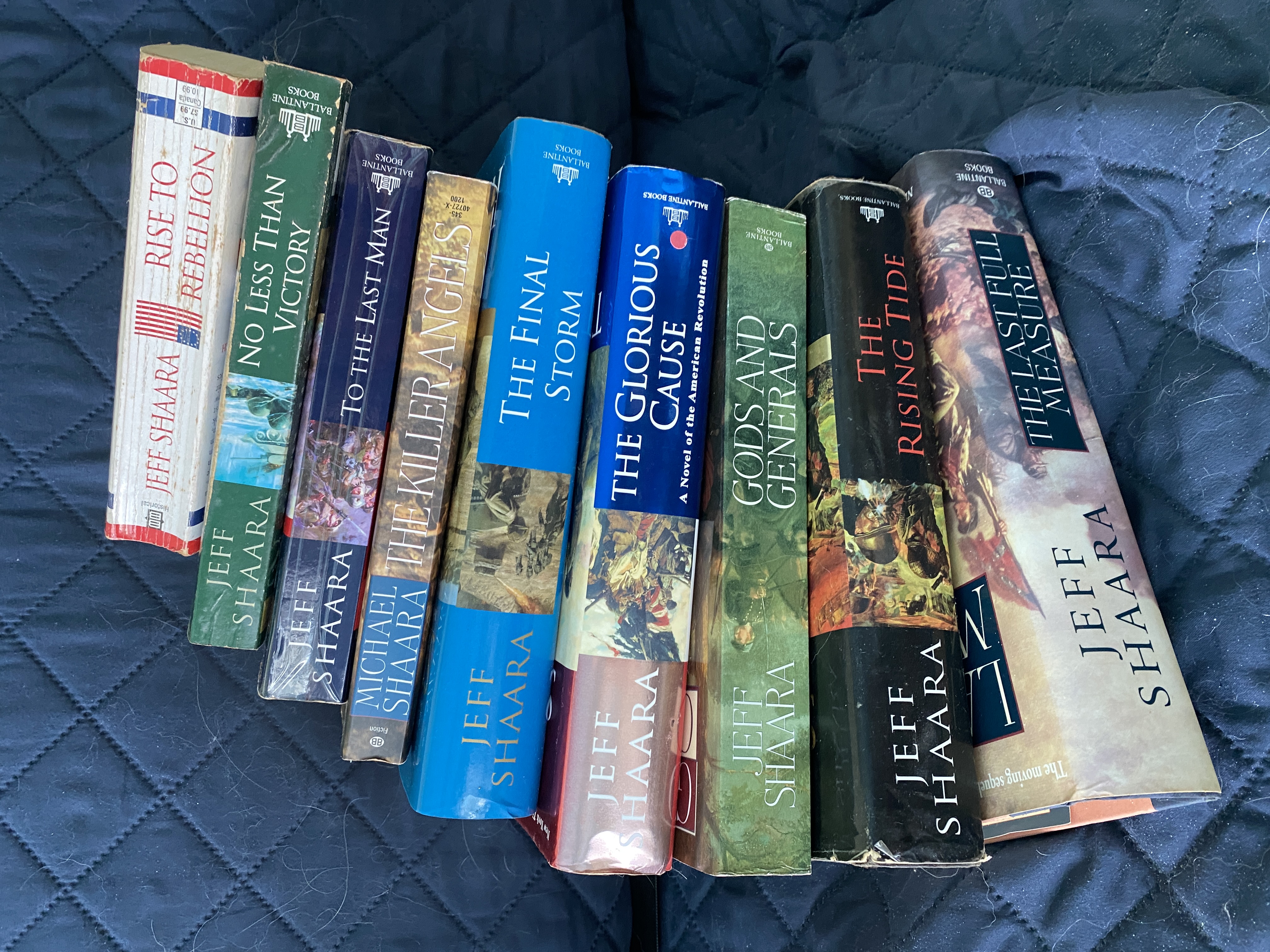 XXXX XXXX
I have a set of books on my shelf written by Michael and Jeff Shaara (father and son.) They are technically novels as they put words into the mouths and thoughts into the heads of the main characters, but those characters were real people, people who were in some part responsible for creating the America we live in today, from the Revolutionary War to Korea and Vietnam. The authors were meticulous in their research and the stories are told from several points of view, including men and women on both sides of the fight, from privates to generals (and their wives or daughters.) I devoured those novels and thought, both when I was reading them and since, that it’s a shame they are not required reading in our schools. What a way to capture the interest and attention of students who have no desire to learn about history than to tell it the way these two men did. Because they get into the heads and hearts of the people of the times, they make the reader care. When was the last time you read a history book and cared much about any of the people you met there? Yet in the Shaara books, we meet Robert E. Lee, not when he was a general, but as a freshly minted Captain not long out of West Point, young, eager and finding his way in his new world. We sit down to a meal prepared by Abigail Adams while she absorbs the discussion of the men and forms her own opinions of what’s going on. In the Shaara books we become the players of history and that’s what hooks us and keeps us reading even when we already know the ending, and even in an arena we are completely unfamiliar with. There are likely authors in other countries who have managed to capture the imaginations of those living in today’s world and transported them back to times long past, as well.
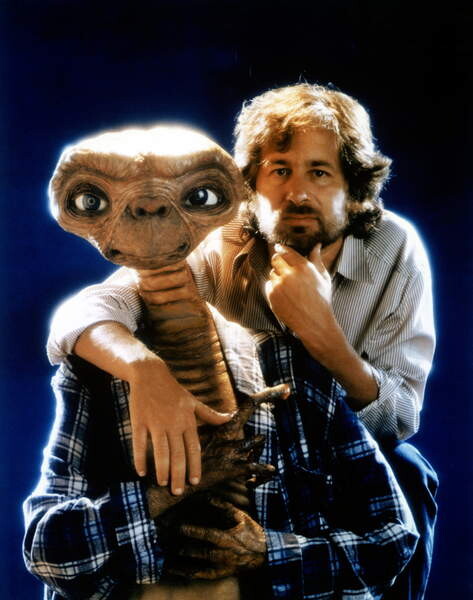 XXXX XXXX
Bottom Line, you can create all kinds of uncommon settings from spaceships to tall ships. From the castles of royalty in any era to the cube farms where so many spend their working lives today, or the frozen front lines in the Korean War, or an alien world peopled by creatures we wouldn’t recognize. It’s the characters who hook the reader and make them care in any world.
XX
Why not hop on over and see what two of my fellow Round Robin Blog Hoppers have to say about Hooking the reader in Uncommon settings – or for that matter with uncommon characters.
XX
XX
XX
Dr. Bob Rich - Nonhuman is not inhuman
Connie Vines - http://mizging.blogspot.com/

Friday, August 18 2023
After a week that brought far more surprises and stress than I thought possible after arriving home after two months away and a three-day drive, I’m amazed I’m even getting this blog written, but here goes.
 ZZ ZZ
My personal favorite is first person both to read and write because I feel like I AM the person living the story. I’m in their head, feeling, seeing, thinking, and reacting to the events going on around me. The first book I wrote that finally got published was written in first person, because it was one man’s personal life falling apart right in the middle of a very close three-way race for the White House. Everything was going well until a man he’d never met handed Matt a photo from a long ago time he’d done everything to forget, to emotions he never wanted to relive. How he dealt with the issue and the choices he made were the story, so I wanted to tell it from his POV and first person was the best way to get into his head.
ZZ
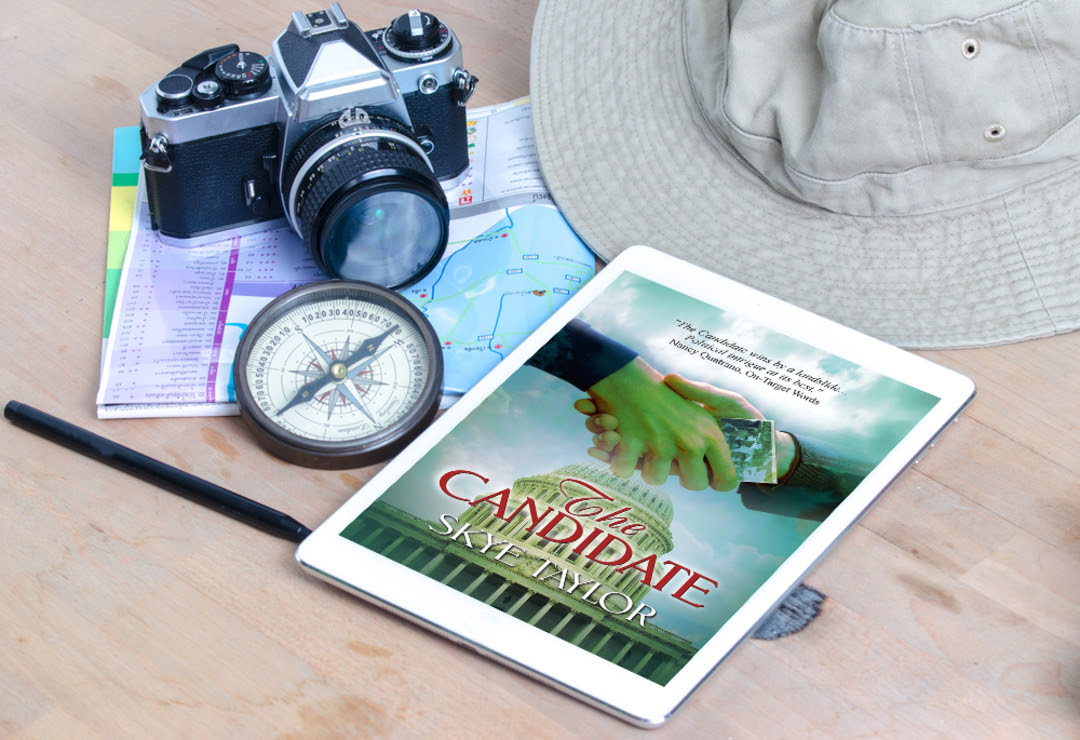 But then, I pitched it at a conference and the editor loved the premise and asked to read it. She still loved the story and the premise but thought it didn’t have enough tension, and she suggested writing in third person so I could see into the other candidates he was running against. I ended up adding the point of view of the young man who brought him the photo in the first place because he was a pivotal character in the story. The next time I pitched it, the editor contracted it. The Candidate is still, all the books I’ve written since, one of the two best I’ve written – my humble opinion. But I have to agree with that first editor. It was stronger when I and the reader knew what the other candidates were up to and definitely created more tension. But then, I pitched it at a conference and the editor loved the premise and asked to read it. She still loved the story and the premise but thought it didn’t have enough tension, and she suggested writing in third person so I could see into the other candidates he was running against. I ended up adding the point of view of the young man who brought him the photo in the first place because he was a pivotal character in the story. The next time I pitched it, the editor contracted it. The Candidate is still, all the books I’ve written since, one of the two best I’ve written – my humble opinion. But I have to agree with that first editor. It was stronger when I and the reader knew what the other candidates were up to and definitely created more tension.
ZZ
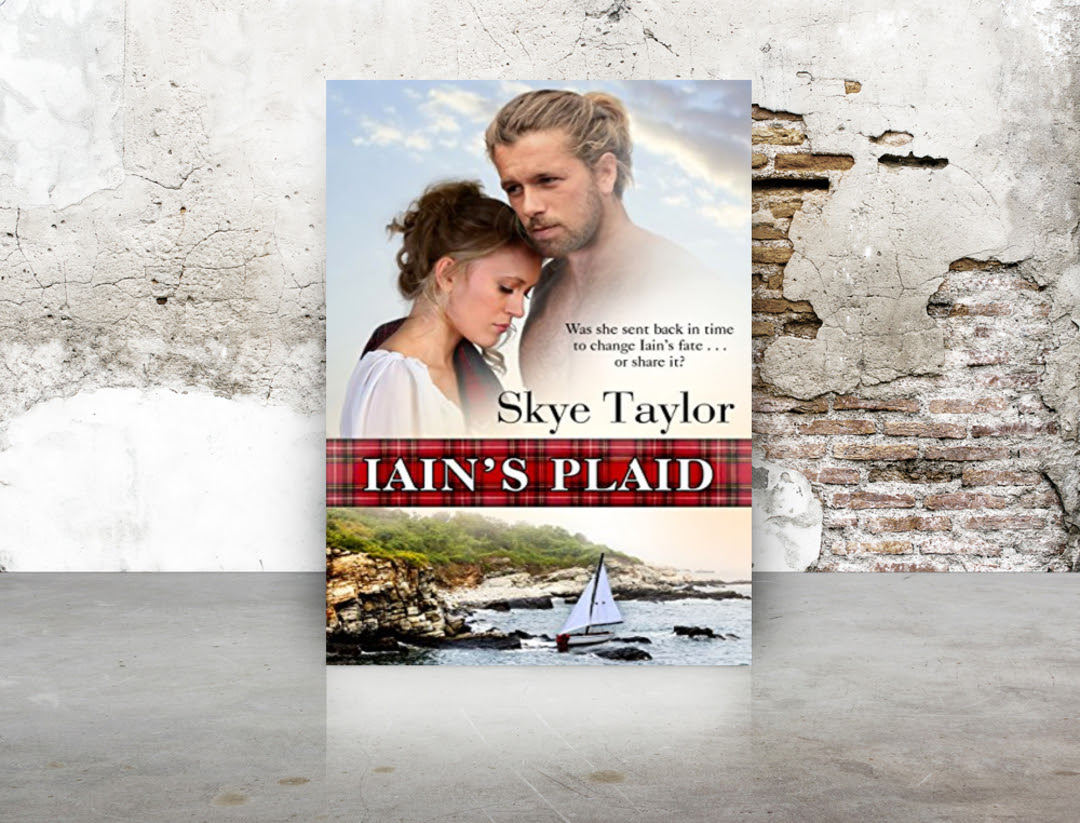 For my romances, both the time travel (Iain’s Plaid) and the series (The Camerons of Tide’s Way) it never occurred to me to try first person because anyone reading a romance wants to know what both halves of the love story and thinking and feeling. I have read one amazingly great romance written in the first person. But the twist was that each alternating chapter was first the heroine, then the hero, then back to the heroine. That story was compelling because we got into the heads and hearts of both characters in a way third person often doesn’t allow. But I didn’t go that route – I chose the more conventional third person so the reader could be in the POV of both the hero and the heroine in every chapter if the transitions were done well. Two of my books in the Tide’s Way series (Healing a Hero and Worry Stone) have won silver in the Royal Palm Literary Awards so clearly the judges thought so as well. For my romances, both the time travel (Iain’s Plaid) and the series (The Camerons of Tide’s Way) it never occurred to me to try first person because anyone reading a romance wants to know what both halves of the love story and thinking and feeling. I have read one amazingly great romance written in the first person. But the twist was that each alternating chapter was first the heroine, then the hero, then back to the heroine. That story was compelling because we got into the heads and hearts of both characters in a way third person often doesn’t allow. But I didn’t go that route – I chose the more conventional third person so the reader could be in the POV of both the hero and the heroine in every chapter if the transitions were done well. Two of my books in the Tide’s Way series (Healing a Hero and Worry Stone) have won silver in the Royal Palm Literary Awards so clearly the judges thought so as well.
ZZ
 Then I decided to try writing a mystery. And for some reason, since it wasn’t a romance I guess, and I like first person, I wrote Bullseye in the First Person POV of my protagonist, Detective Jesse Quinn. I like that story as have my readers, but when I started out to write book two in the series, I wondered if I had made a mistake. So much easier to create suspense if you see into the heads of others – especially the bad guy. I even wrote a scene between the killer and the victim that the reader would know about but my heroine would not. But then I decided to keep the series consistent and that scene is in a file somewhere while I tackled telling the story from Jesse’s point of view. Not sure what I’ll do with the next book in the series – time will tell. Then I decided to try writing a mystery. And for some reason, since it wasn’t a romance I guess, and I like first person, I wrote Bullseye in the First Person POV of my protagonist, Detective Jesse Quinn. I like that story as have my readers, but when I started out to write book two in the series, I wondered if I had made a mistake. So much easier to create suspense if you see into the heads of others – especially the bad guy. I even wrote a scene between the killer and the victim that the reader would know about but my heroine would not. But then I decided to keep the series consistent and that scene is in a file somewhere while I tackled telling the story from Jesse’s point of view. Not sure what I’ll do with the next book in the series – time will tell.
ZZ
And now I’m plotting out a whole new series, but I haven’t decided on POV yet. Since I have just one main protagonist, I would like to return to my favorite, first person. She will have a love life – everyone needs a little romance in their lives, but the main story is hers and she’s the mover in the series so that’s the way I’m leaning. And like I did with the mystery I just finished, I’ve already written the first scene: Here’s a teaser:
ZZ
My heart plummeted as my boss outlined his plans, pulling the last rug out from under me. Just a week ago, I’d been a happily married woman with two wonderful sons I’d just driven to college leaving time for me and Dan to start in on the Bucket List we’d been building over the years. Two nights ago, Dan packed his clothes and left. Without me.
Now I had no marriage. No boys to busy myself with. And now, no job.
No job, that is, unless I wanted to move across the country to a state I never had any desire to live in.
“No need to give me an answer right now, Kenzie,” Bill was saying, his voice coming from a long way off. “Think about it.”
ZZ
So, now it’s time to check in and see what some of my fellow Blog Hoppers think about POV – but do leave me a comment first…..
ZZ
Anne Stenhouse
AJ McGuire
Connie Vines
Helena Fairfax
Monday, August 14 2023
Final round of voting is here and I made it this far - If you liked the cover of my book, Believing in Mac: The Camerons of Tide’s Way (Book 7), won't you please give it another vote in the Cover of the Month contest on AllAuthor.com! https://allauthor.com/cover-of-the-month/16087/
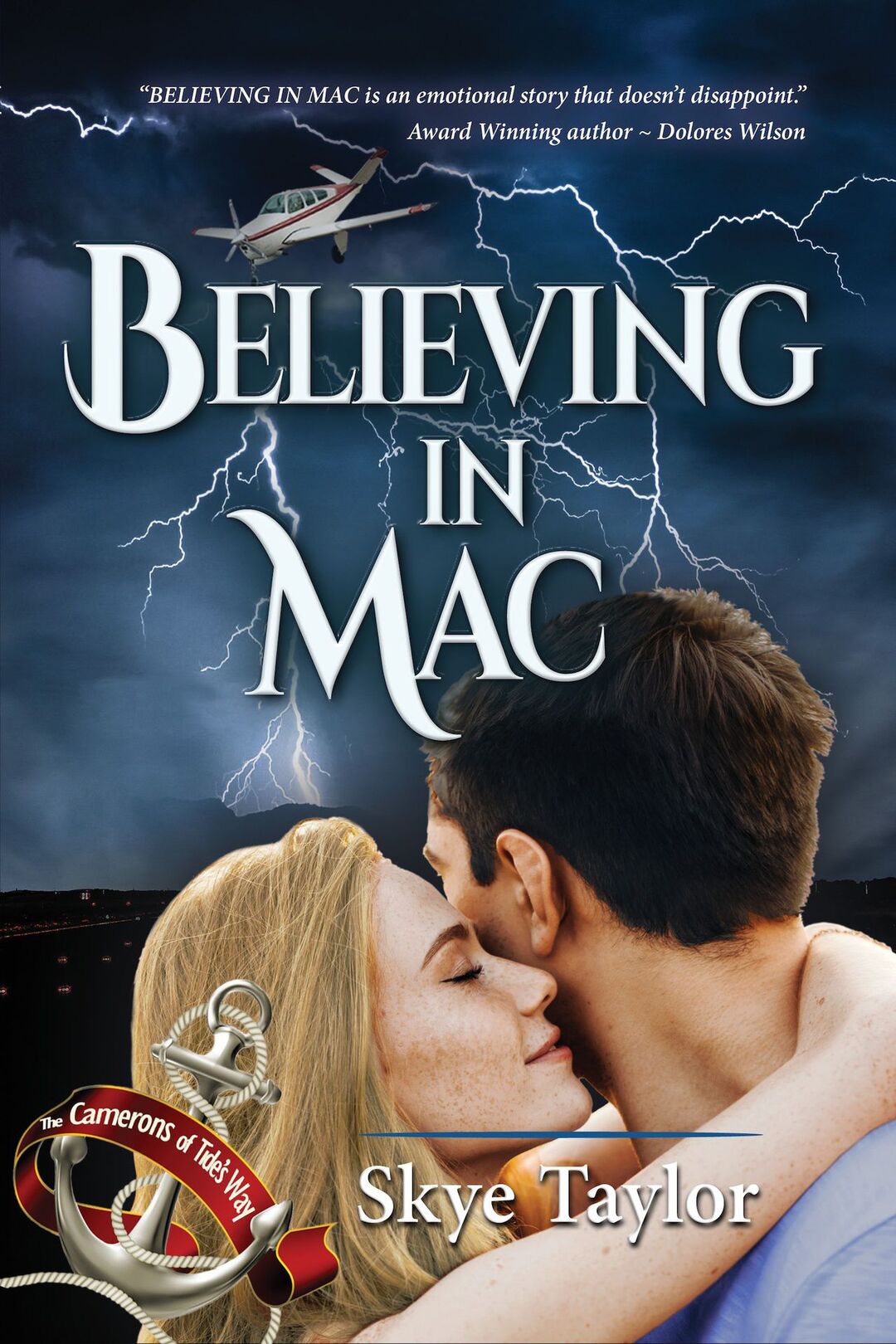
Show me love and vote for my Book Cover at the #CoverOfTheMonth contest. https://allauthor.com/cover-of-the-month/16087/
Monday, July 31 2023
They say not to judge a book by its cover but I need you to do just that. If you liked the cover of my book, Believing in Mac: The Camerons of Tide’s Way (Book 7), please vote for it for the Cover of the Month contest on AllAuthor.com!
https://allauthor.com/cover-of-the-month/16087/ 
Saturday, July 22 2023
This month our Round Robin Bloggers are going to discuss how important is Character Arc to our stories and how does it tie into the plot or story arc? Do we usually give some time and story to character arcs for secondary characters?
XX
There are exceptions to every rule. Jack Reacher, for one, seems to have pretty much no character arc. Sure, he has flaws, but they play into the plot of the suspense and action. Sherlock Holmes comes to mind as another pretty much unchanging character as is Jessica Fletcher in the Murder She Wrote TV series of a few years back. In these books and shows, the plot or story arc is what carries the action and we know little or nothing of the characters outside of the current plot.
XX
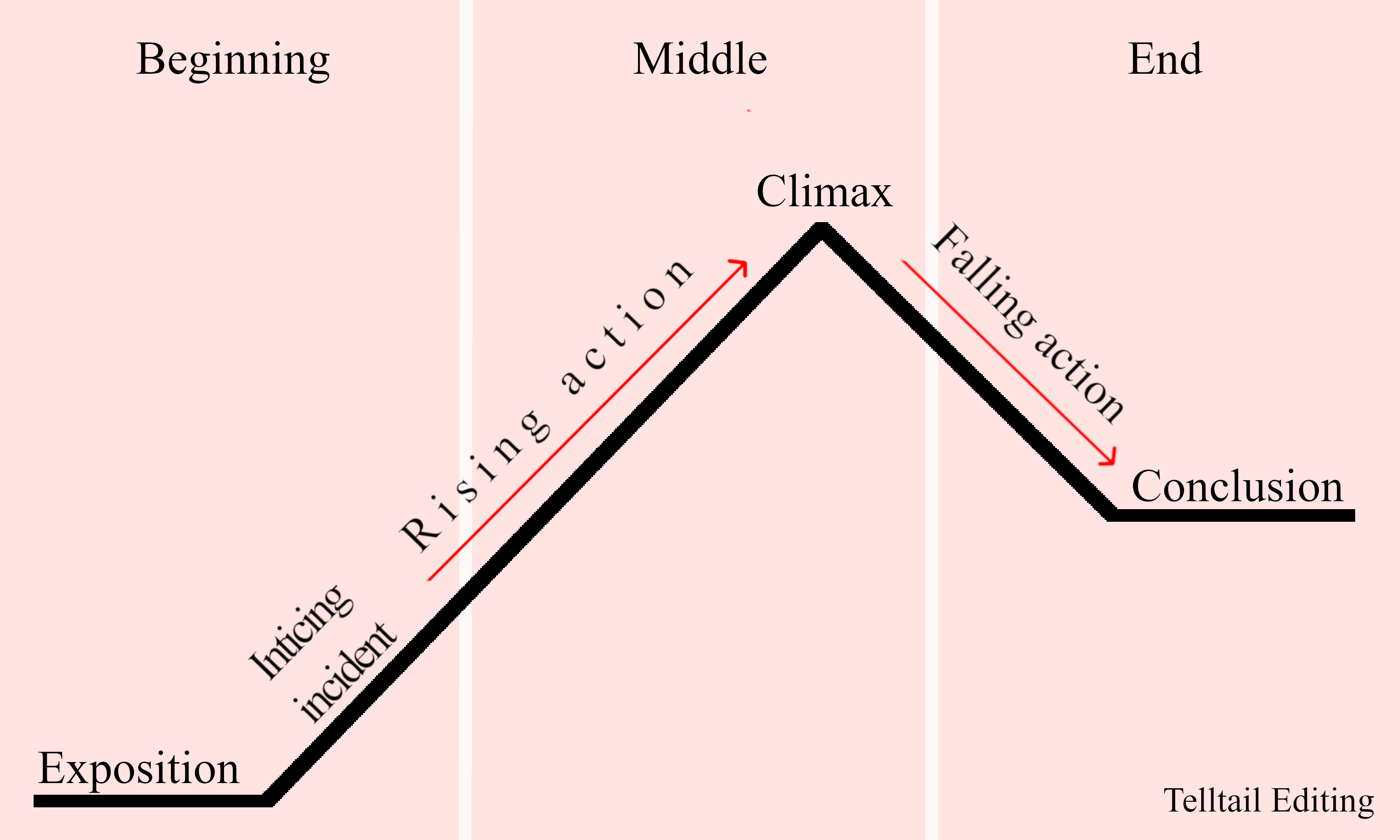 Story arc has five dramatic stages: exposition, rising action, climax, falling action, and resolution. Or to shorten that, a beginning, middle and end. The beginning is when the problem is introduced. Maybe it’s a dead body. Maybe it’s a kidnapped child, or a terrorist threat. But whatever it is, it grabs the reader’s attention by the obvious need to be dealt with, sooner rather than later. And the characters in this kind of story, leap into action to do just that. Finding the cause, or the culprit, figuring out what kind of terrorist attack is brewing and the who/what/why and where is the meat of the story. But without the satisfying ending: The murderer is caught, the threat thwarted and the child rescued, none of us would tune in again, or purchase another book by that author. Story arc has five dramatic stages: exposition, rising action, climax, falling action, and resolution. Or to shorten that, a beginning, middle and end. The beginning is when the problem is introduced. Maybe it’s a dead body. Maybe it’s a kidnapped child, or a terrorist threat. But whatever it is, it grabs the reader’s attention by the obvious need to be dealt with, sooner rather than later. And the characters in this kind of story, leap into action to do just that. Finding the cause, or the culprit, figuring out what kind of terrorist attack is brewing and the who/what/why and where is the meat of the story. But without the satisfying ending: The murderer is caught, the threat thwarted and the child rescued, none of us would tune in again, or purchase another book by that author.
XX
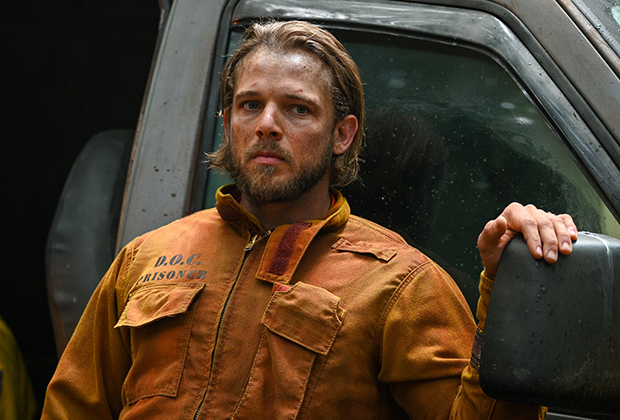 But, in most of today’s TV action series and police dramas, the cast of characters all have personal lives that intersect and impact the telling of the main story and those personal character arcs add depth and reality to the stories. Fire Country, for instance, features a man on early parole as a volunteer firefighter. There is the chief and his wife and the rest of the men and women on the squad and each of them have a character arc that evolves over the course of the series. Blue Bloods is based on a NY family of cops, a lawyer (Asst DA), a nurse, and their kids and other extended family. Again, all of those characters have a personal character arc that adds interest and reality to the main drama of a cataclysmic fire or the day to day life of law enforcement in NYC. Back when my dad But, in most of today’s TV action series and police dramas, the cast of characters all have personal lives that intersect and impact the telling of the main story and those personal character arcs add depth and reality to the stories. Fire Country, for instance, features a man on early parole as a volunteer firefighter. There is the chief and his wife and the rest of the men and women on the squad and each of them have a character arc that evolves over the course of the series. Blue Bloods is based on a NY family of cops, a lawyer (Asst DA), a nurse, and their kids and other extended family. Again, all of those characters have a personal character arc that adds interest and reality to the main drama of a cataclysmic fire or the day to day life of law enforcement in NYC. Back when my dad  religiously watched Perry Mason, a lawyer who always got his client off (and all his clients were actually innocent) we knew nothing about Mr. Mason the man. Was he married? Have kids? Aging parents? Did he play poker? Drink? Who knew? Today’s TV lawyers all have a life that the writers skillfully incorporate into the theme of the main story. For series that span several seasons, there are love affairs and marriage, kids are born or going off to college. Some characters even struggle with drug or alcohol addiction, gender issues and other hot topics of the day. But all those individual character arcs add compelling interest in the series and keeps viewers tuning in every week and readers eager to buy the next book as soon as it comes out. religiously watched Perry Mason, a lawyer who always got his client off (and all his clients were actually innocent) we knew nothing about Mr. Mason the man. Was he married? Have kids? Aging parents? Did he play poker? Drink? Who knew? Today’s TV lawyers all have a life that the writers skillfully incorporate into the theme of the main story. For series that span several seasons, there are love affairs and marriage, kids are born or going off to college. Some characters even struggle with drug or alcohol addiction, gender issues and other hot topics of the day. But all those individual character arcs add compelling interest in the series and keeps viewers tuning in every week and readers eager to buy the next book as soon as it comes out.
XX
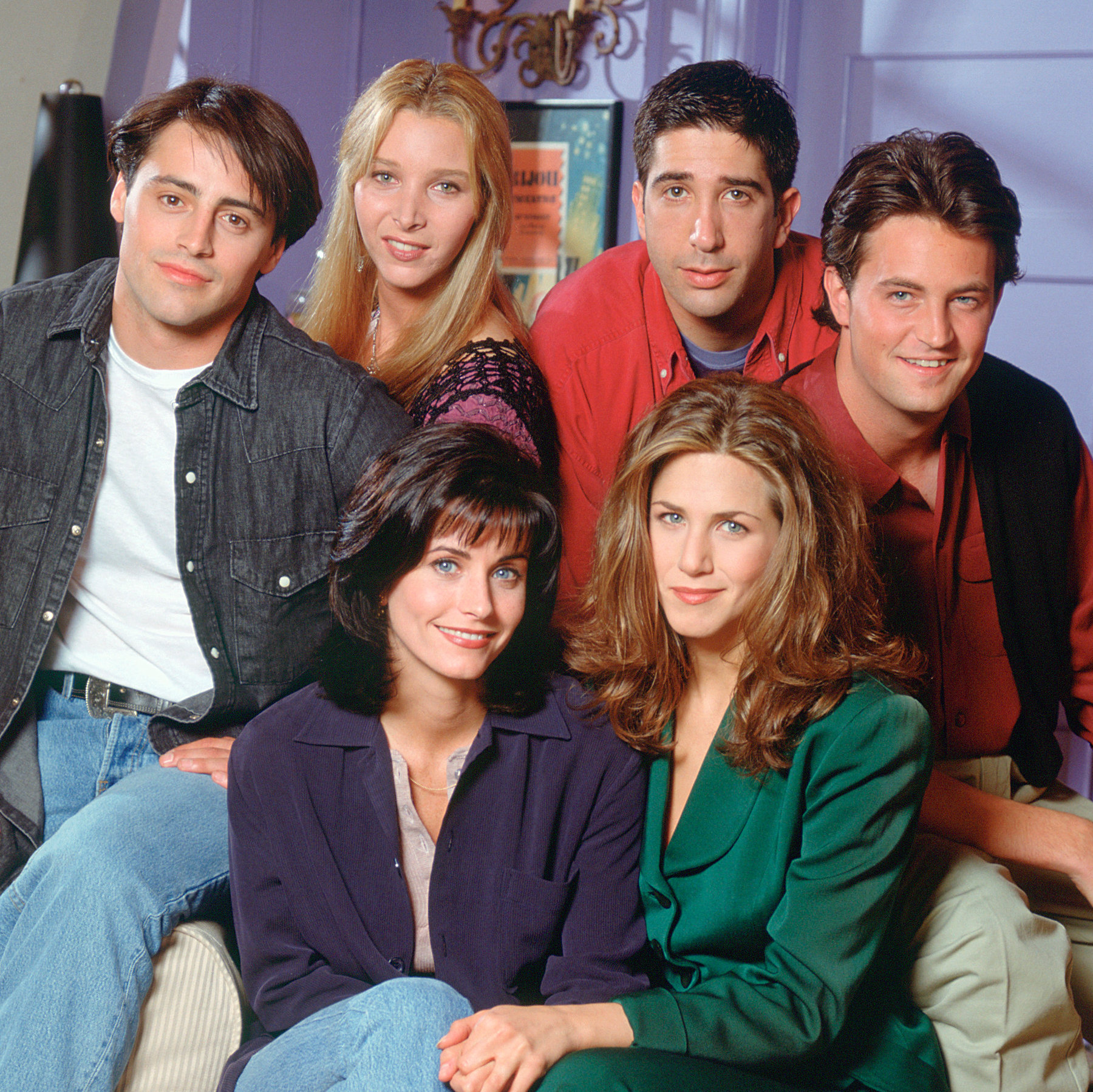 But then there are the stories that depend entirely on character arc. Romances. Family dramas. Women’s Fiction and others. There is a story arc in all of these books, too, but it is the character arc that makes or breaks the book. What do the characters want, why, and what’s stopping them? In the TV comedy series, Friends, or Big Bang Theory, each week was another view into the lives of these individual characters and their jobs, free time etc, but it was their personal growth that carried the series from one year to the next. Romances happened, jobs changed, neighbors came and went and every time the characters involved had to grow or adapt to the new realities. Their character arcs were as important to the success of the series as the comedic presentation. But then there are the stories that depend entirely on character arc. Romances. Family dramas. Women’s Fiction and others. There is a story arc in all of these books, too, but it is the character arc that makes or breaks the book. What do the characters want, why, and what’s stopping them? In the TV comedy series, Friends, or Big Bang Theory, each week was another view into the lives of these individual characters and their jobs, free time etc, but it was their personal growth that carried the series from one year to the next. Romances happened, jobs changed, neighbors came and went and every time the characters involved had to grow or adapt to the new realities. Their character arcs were as important to the success of the series as the comedic presentation.
XX
 But in our novels, this is even more important. Our main characters must grow and change. They have to fight their individual battles and come out stronger, smarter, or better able to adapt. For those of you who never read the initial book, Outlander, Clair Beauchamp, a WWII nurse went through the stones and ended up in the mid 1700s. She was faced with a very different world than anything she had ever experienced. Her life was precarious for so many reasons, one being her modern day knowledge of medicine that could get her branded as a witch, to say nothing of the fact she was a stranger in that time and place with no family or friends. Her character arc included learning how to live in those less comfortable times and learning to live with the fact that she had left a husband she loved in the future and was further troubled by falling in love with another man in her new time. At the start, she wanted desperately to go back to her own time, but as that became less and less likely, and her love for Jamie grew, she adapted to not getting her initial desire, but finding peace and meaning in her new life. But in our novels, this is even more important. Our main characters must grow and change. They have to fight their individual battles and come out stronger, smarter, or better able to adapt. For those of you who never read the initial book, Outlander, Clair Beauchamp, a WWII nurse went through the stones and ended up in the mid 1700s. She was faced with a very different world than anything she had ever experienced. Her life was precarious for so many reasons, one being her modern day knowledge of medicine that could get her branded as a witch, to say nothing of the fact she was a stranger in that time and place with no family or friends. Her character arc included learning how to live in those less comfortable times and learning to live with the fact that she had left a husband she loved in the future and was further troubled by falling in love with another man in her new time. At the start, she wanted desperately to go back to her own time, but as that became less and less likely, and her love for Jamie grew, she adapted to not getting her initial desire, but finding peace and meaning in her new life.
XX
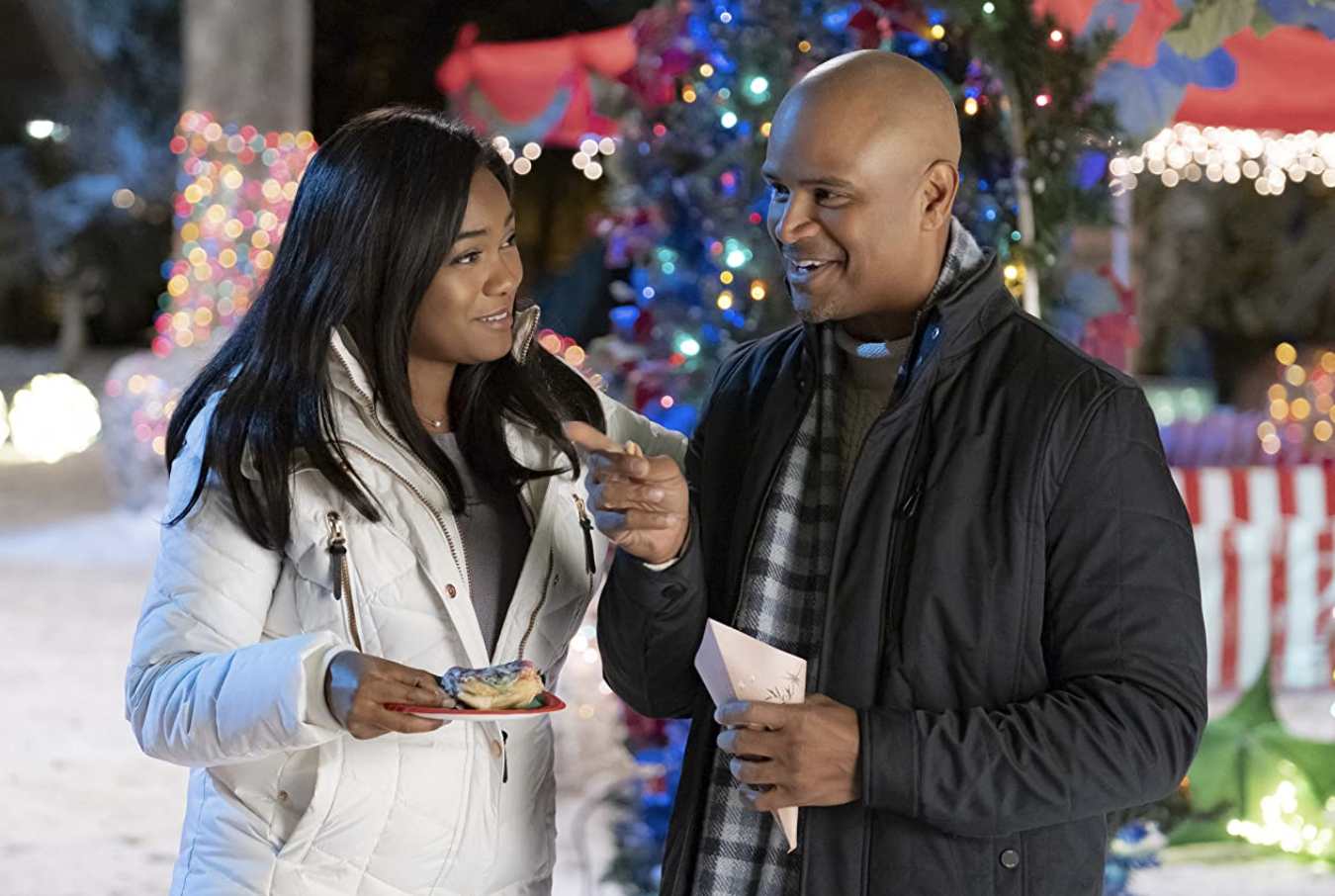 In contemporary romances there are two character arcs: the hero and the heroine. Each has something they want, often in opposition to each other. If you’ve ever watched the Hallmark channel you’ve probably had your fill of women who left home the moment they graduated high school, turned their backs on family and the boy they loved and planned never to come back and yet….here they are back in their home town, usually quaint while they were living the busy life in the city. First thing they realize is their old love is still here and usually not attached for one reason or another and all the old feelings are still there under the skin. But there’s history to be dealt with. The abandonment, or the belief that the other never cared as much as the hero or heroine once thought. Sometimes the story conflict is that either the hero or the heroine has been sent to purchase a property for the purpose of creating some grand new modern enterprise, but the other half of the duo is the current owner and it’s a family property or one with so much history the entire town is against it. Romances always have a happy ever after so that character arc includes learning to appreciate what had been left behind, what is of value now and how to compromise. In contemporary romances there are two character arcs: the hero and the heroine. Each has something they want, often in opposition to each other. If you’ve ever watched the Hallmark channel you’ve probably had your fill of women who left home the moment they graduated high school, turned their backs on family and the boy they loved and planned never to come back and yet….here they are back in their home town, usually quaint while they were living the busy life in the city. First thing they realize is their old love is still here and usually not attached for one reason or another and all the old feelings are still there under the skin. But there’s history to be dealt with. The abandonment, or the belief that the other never cared as much as the hero or heroine once thought. Sometimes the story conflict is that either the hero or the heroine has been sent to purchase a property for the purpose of creating some grand new modern enterprise, but the other half of the duo is the current owner and it’s a family property or one with so much history the entire town is against it. Romances always have a happy ever after so that character arc includes learning to appreciate what had been left behind, what is of value now and how to compromise.
XX
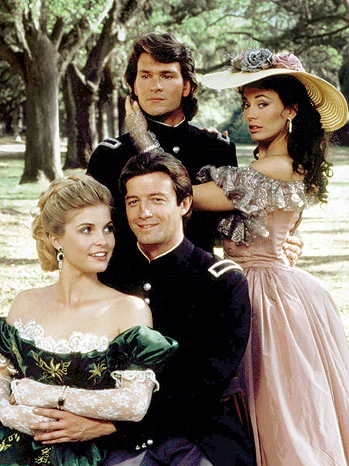 In a family drama, often there is no happy ever after, but the character arc is still of paramount importance. Think of all the family dramas you might have read or watched over the years. Dallas on TV or the Kent Family Chronicles by John Jakes. Over the course of those stories there were good times and bad, war and peace, love and loss, joy and grief. But it was how the various characters learned to cope, to grow and deal with the vicissitudes of life that made those stories compelling. Sometimes the characters flourished through desire and the hard work required to succeed. Sometimes it was loss that they had to come to terms with. But always, it was their growth that made them and the stories real. In a family drama, often there is no happy ever after, but the character arc is still of paramount importance. Think of all the family dramas you might have read or watched over the years. Dallas on TV or the Kent Family Chronicles by John Jakes. Over the course of those stories there were good times and bad, war and peace, love and loss, joy and grief. But it was how the various characters learned to cope, to grow and deal with the vicissitudes of life that made those stories compelling. Sometimes the characters flourished through desire and the hard work required to succeed. Sometimes it was loss that they had to come to terms with. But always, it was their growth that made them and the stories real.
XXXX
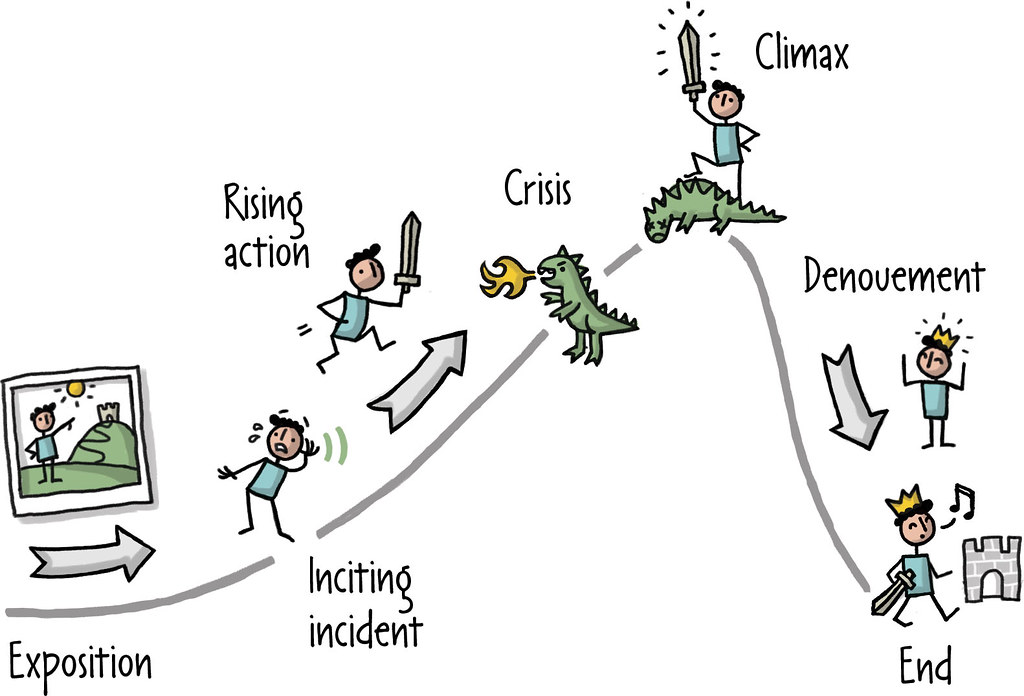 Character ARC, is, as you see here, very similar to the story arc, but is focused on the character rather than the plot. This arc often drives the plot, and sometimes the story arc and protgonist's arc have a lot of similar events and roadblocks. Here's where secondary character arcs come in. Secondary characters are either part of the roadblock or part of the solution, and sometimes both which will require both characters to grow, adapt and compromise. Character ARC, is, as you see here, very similar to the story arc, but is focused on the character rather than the plot. This arc often drives the plot, and sometimes the story arc and protgonist's arc have a lot of similar events and roadblocks. Here's where secondary character arcs come in. Secondary characters are either part of the roadblock or part of the solution, and sometimes both which will require both characters to grow, adapt and compromise.
XX
I'm currently writing book 2 in my Jesse Quinn mystery series. The main story arc is the solving of two crimes, that of repeating grafitti on a local church, and then the murder of the church's controversial pastor. Are they connected? Or is there something else going on? Jesse and her temporary partner have very different ideas so both characters will have to grow and adapt, compromise and in the process, learn to work together. My heroine, Jesse Quinn, a detective with the St John's County Sheriff's Department, also has a character arc outside of her position as detective that continues from book one into book two. She is divorced and shares custody of her two teenagers. The son is a decent kid that overcame some of his issues before the story opens, but the daughter is going through her early teen years pushing every button Jesse has. In this new book, Jacqui wants to live with her father and Jesse has to come to terms with the loss of the close friendship they shared before Jacqui hit her teen years, all the while trying to decide what is best for her daughter now and going forward. Then she's going to have to learn to live with whatever decisions she makes. It's a growth story for both Jesse and her daughter. And then there's Seth, the man who would like to be more in Jesse's life than he is up to now. Jesse isn't sure she's ready to take on another romantic entanglement while pursuing a career as the only woman on the major crimes squad. Her character arc adds depth and interest to the ongoing police investigation and realism to her life as a detective and a mom. Those of Seth and Jacqui add depth to Jesse's story.
XX
So, I challenge you to think about the stories that have stuck with you long after you watched or read them and think about what it was that made them so memorable. Why did you enjoy them? Why do you still think about the characters you met within those pages? I’m betting you will come to agree, it was their personal character arcs that made them impossible to forget, and the book impossible to put down or the TV series you couldn't wait to tune into each week.
XX
So, why not hop on over and see what my other Blog Hop Authors think about Character Arc.
XX
 Anne Stenhouse Anne Stenhouse
Connie Vines
Diane Bator
Helena Fairfax
Marci Baun
Victoria Chatham
A.J. Maguire
Saturday, June 17 2023

For a long time, I believed that there were only two kinds of writers. Plotters! And Pantsers! But now I’ve learned that there are also hybrids.
 The first book I ever wrote was a free-for-all. I had no idea what I was doing, actually, except picking up the writing bug where I’d left off when I started my family and got too busy to write. I had a high school teacher whose very first assignment was to write 500 words on something I could smell. I’ll admit, my first thought was I’m DOOMED! I am sooo going to fail this class in creative writing. But I’d never deliberately skipped a homework assignment so I sat myself down and started writing. It’s probably a lucky thing that my mom had asked me to go take the sheets off the clothesline (See how old I am? We didn’t have dryers back when I was in high school.) Anyway, with the scent of freshly washed sheets strong in my nostrils, that’s what I wrote 520 words on. To my utter amazement, I got an A+ for the assignment. The first book I ever wrote was a free-for-all. I had no idea what I was doing, actually, except picking up the writing bug where I’d left off when I started my family and got too busy to write. I had a high school teacher whose very first assignment was to write 500 words on something I could smell. I’ll admit, my first thought was I’m DOOMED! I am sooo going to fail this class in creative writing. But I’d never deliberately skipped a homework assignment so I sat myself down and started writing. It’s probably a lucky thing that my mom had asked me to go take the sheets off the clothesline (See how old I am? We didn’t have dryers back when I was in high school.) Anyway, with the scent of freshly washed sheets strong in my nostrils, that’s what I wrote 520 words on. To my utter amazement, I got an A+ for the assignment.
XX
That entire exercise had been written entirely by the seat of my pants – no plotting, or even outlining. Just sat down and wrote. So it stands to reason that for several years in between that and my first attempt at a novel, everything I wrote was freestyle. I still have that first mostly written novel in a file somewhere. Written in pencil on yellow lined paper since I didn’t even own a typewriter and personal computers didn’t exist yet. Since that time, I’ve attended many workshops and a lot of conferences where I’ve been faced with other options.
XX
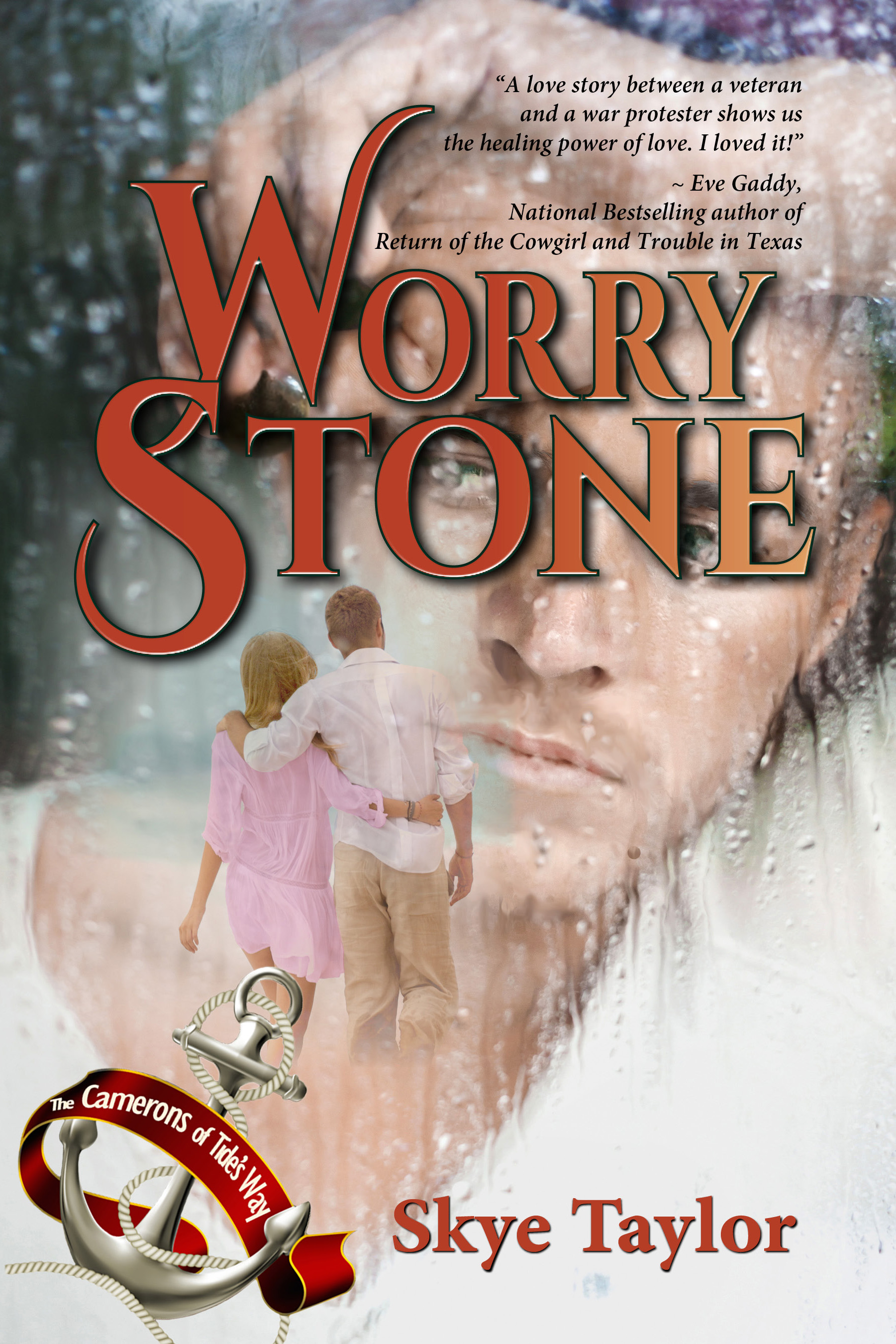 But I was still a die-hard pantser. Worry Stone, which later became part of my romance series, was written pretty much by the seat of my pants, but it wasn’t entirely freestyle like my essay on the scent of freshly laundered sheets. I created my characters first. I even knew my main character’s entire life story pretty much. Since it involved some real places and the background of a war, I did a lot of research as well. My hero was a Marine in Vietnam and came home to cope with his own demons as well as the heap of guilt our country loaded on every returning soldier, so I consulted my brother among others – a man who had been there, done that and was generous enough to relive some of his heartbreak and memories with me. Of all the ten books I now have in print (or ebook) I still think it’s my best. (BTW, Worry Stone won Silver in the Royal Palm Literary Awards in 2019 and I think it’s the best I’ve written so far.) But I was still a die-hard pantser. Worry Stone, which later became part of my romance series, was written pretty much by the seat of my pants, but it wasn’t entirely freestyle like my essay on the scent of freshly laundered sheets. I created my characters first. I even knew my main character’s entire life story pretty much. Since it involved some real places and the background of a war, I did a lot of research as well. My hero was a Marine in Vietnam and came home to cope with his own demons as well as the heap of guilt our country loaded on every returning soldier, so I consulted my brother among others – a man who had been there, done that and was generous enough to relive some of his heartbreak and memories with me. Of all the ten books I now have in print (or ebook) I still think it’s my best. (BTW, Worry Stone won Silver in the Royal Palm Literary Awards in 2019 and I think it’s the best I’ve written so far.)
XX
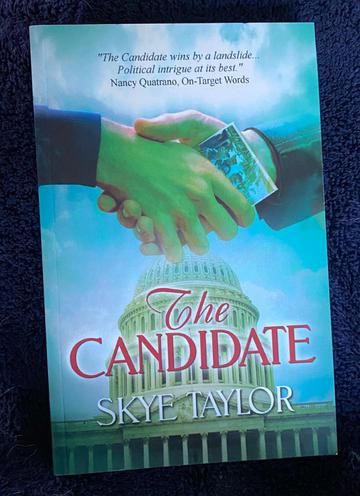 My second-best book (IMHO,) and my first to be published, The Candidate, was written very much the same way. The Candidate is a main stream novel set in today’s world, but the protagonist was another Marine who had fought in Vietnam and is now running for president when he is handed a photo that brings back memories he never wanted to revisit and emotions he wasn’t ready to cope with, especially not in the midst of a run for the White House. I had done most of the research so again, it was just a matter of creating believable, compelling characters and letting them run with the story. I was as entertained by the unfolding story as my readers and I enjoyed writing that way. My second-best book (IMHO,) and my first to be published, The Candidate, was written very much the same way. The Candidate is a main stream novel set in today’s world, but the protagonist was another Marine who had fought in Vietnam and is now running for president when he is handed a photo that brings back memories he never wanted to revisit and emotions he wasn’t ready to cope with, especially not in the midst of a run for the White House. I had done most of the research so again, it was just a matter of creating believable, compelling characters and letting them run with the story. I was as entertained by the unfolding story as my readers and I enjoyed writing that way.
xx
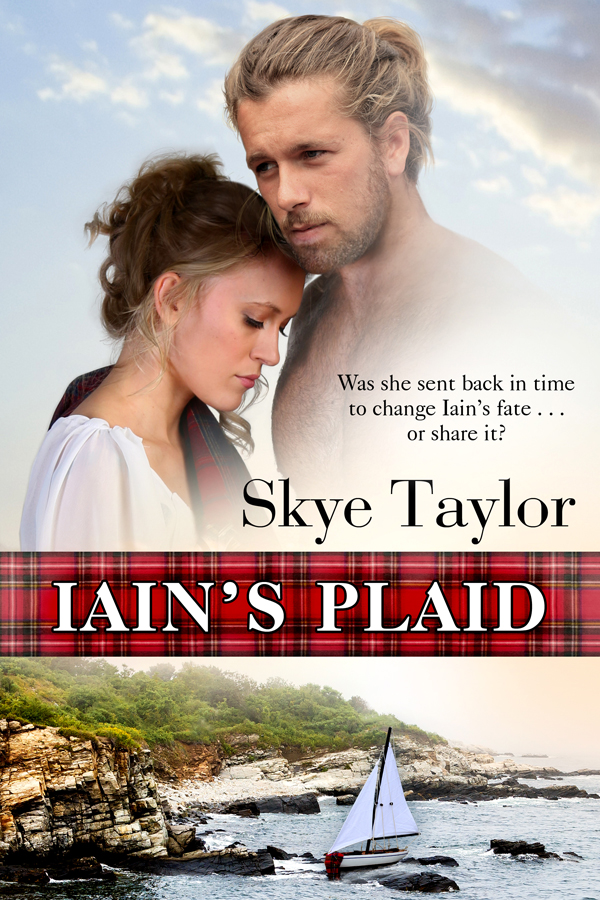 The first full length novel I completed was inspired by an exploration of a long-abandoned island off the coast of Maine with a lot of history. As I stood on the edge of a larger than usual cellar hole, the granite I was perched on moved alarmingly and I jumped free, not wishing to fall in. But I have a writer’s brain that finds stories everywhere and on my way home it occurred to me to wonder what if I had fallen in and hit my head and then woken in another century? So, of course, Dani, my heroine in Iain’s Plaid does just that and wakes up in 1775 in the basement of a warehouse whose owner has a ship loaded with contraband headed to Boston and he thinks she’s a spy. It’s a time travel and a romance but I did a ton of research, walking the streets of Boston, reading journals and letters from the period. But aside from that, the book was written entirely by the seat of my pants. The ONLY guiding star for that book was that I knew before I started writing it, how it would end. In fact, I wrote the last chapter first. I traveled that journey, knowing where I was going but with no road map. The first full length novel I completed was inspired by an exploration of a long-abandoned island off the coast of Maine with a lot of history. As I stood on the edge of a larger than usual cellar hole, the granite I was perched on moved alarmingly and I jumped free, not wishing to fall in. But I have a writer’s brain that finds stories everywhere and on my way home it occurred to me to wonder what if I had fallen in and hit my head and then woken in another century? So, of course, Dani, my heroine in Iain’s Plaid does just that and wakes up in 1775 in the basement of a warehouse whose owner has a ship loaded with contraband headed to Boston and he thinks she’s a spy. It’s a time travel and a romance but I did a ton of research, walking the streets of Boston, reading journals and letters from the period. But aside from that, the book was written entirely by the seat of my pants. The ONLY guiding star for that book was that I knew before I started writing it, how it would end. In fact, I wrote the last chapter first. I traveled that journey, knowing where I was going but with no road map.
xx
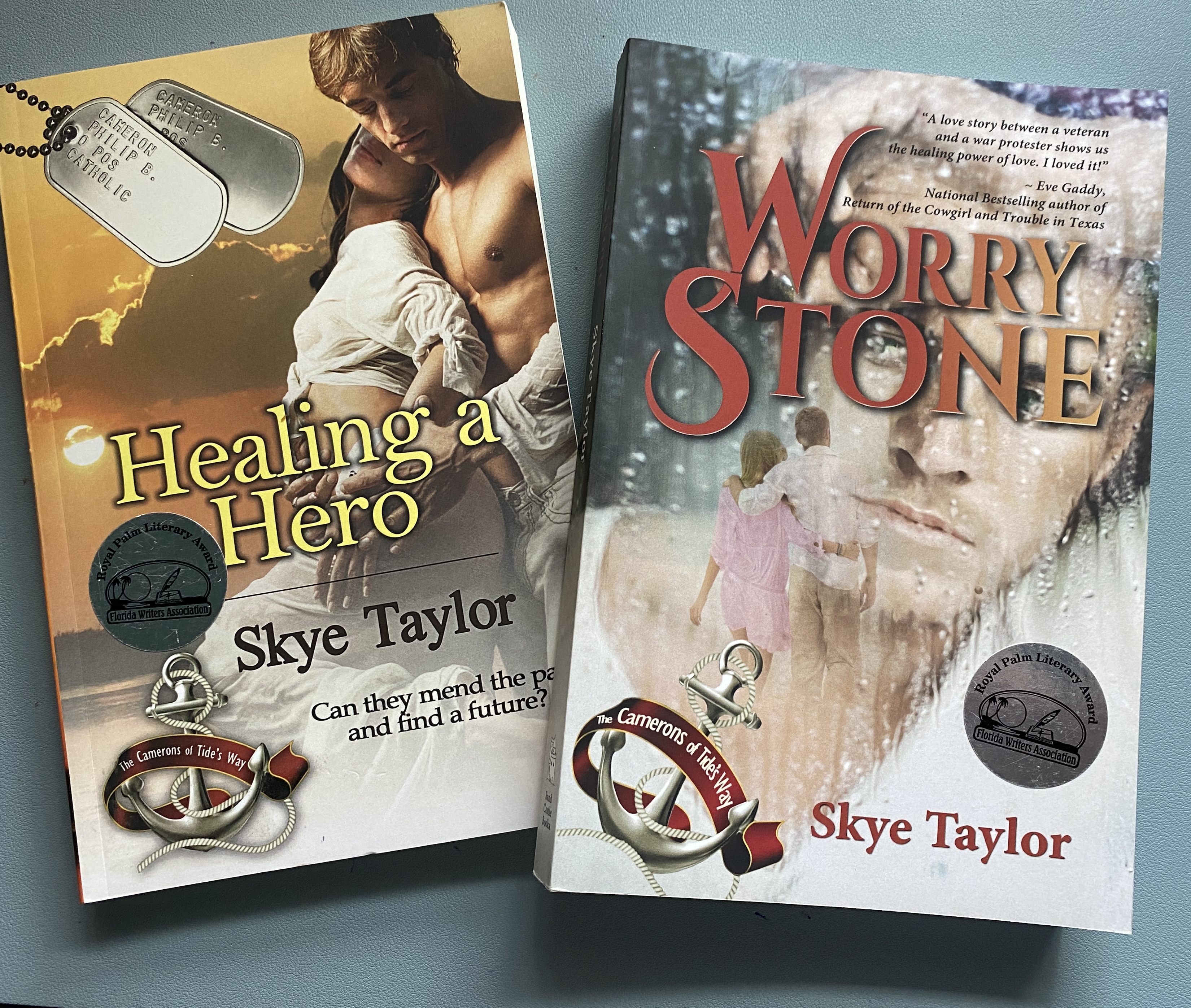 After that my romance series began. By then I’d been presented with all the plusses for outlining before writing, or plotting the story first. I even have several books on my shelf presenting different ways to go about plotting. But it never seemed to work. I had more fun creating my hero and heroine, giving them a setting and a problem and then letting them sort it out. One of the books in the Camerons of Tide’s Way series, Healing A Hero, also won Silver in the Royal Palm Literary Awards two years before Worry Stone did. It appeared, in spite of my efforts to plot or plan ahead, I was doing okay with my pantser method of writing. After that my romance series began. By then I’d been presented with all the plusses for outlining before writing, or plotting the story first. I even have several books on my shelf presenting different ways to go about plotting. But it never seemed to work. I had more fun creating my hero and heroine, giving them a setting and a problem and then letting them sort it out. One of the books in the Camerons of Tide’s Way series, Healing A Hero, also won Silver in the Royal Palm Literary Awards two years before Worry Stone did. It appeared, in spite of my efforts to plot or plan ahead, I was doing okay with my pantser method of writing.
xx
But then I decided to write a mystery. Did my research: Attended the local Citizens Law Enforcement Academy, interviewed the only female detective on the major crimes squad at the time, and set it in my hometown so I could visit anything or place I needed to in the course of writing it. I liked my heroine, Jesse Quinn. And I had a pretty good idea how the story would end, but what I’d failed to realize is that a good mystery can’t suddenly fling things at a reader that come out of nowhere. The writer has to know who did it, why they did it, how? And all the red herrings have to make sense. Which meant PLOTTING. Bullseye has done pretty well and I’m part way through the second book in that series which I hope to have out next fall, but plotting still does not come naturally to me. I’ve got yet another trade book, Take Your Pants Off at hand and have been trying to follow the very sound and proven advice that it isn’t plotting so much as outlining. Understanding what events have to happen and the sequence they have to happen in to make sense and give the reader a satisfying ending.
xx
That makes me a hybrid. But all in all, I prefer the pantser method. I urge you now, to hop on over and check out how my fellow Round Robin Authors write their stories.

xx
Marci Baun
Dr Bob Rich
Anne Stenhouse
Helena Fairfax
Saturday, May 20 2023
This month we are discussing emotional wounds for our protagonists – is it important? And if so, how do we help our heroes and heroines overcome the wounds and heal, or learn how to cope?
xx
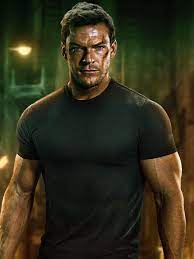 There are protagonists in some very popular novels and series that don’t appear to have any emotional wounds, or if they do, they are never mentioned. Consider Jack Reacher – ex Army, unmarried, no kids, one brother in jail and a dad in assisted living. One might consider either of those issues a wound, but Lee Child did not use them that way. Reacher seems to be a man at peace with himself and his vagabond life. His mission in life, while never stated by Reacher himself, but obvious as the series unfolds, is to get involved when someone without the ability to fix things is being hurt in some way by forces stronger than themselves. And in spite of the mayhem he often leaves in his wake, he somehow avoids getting into trouble with the law. And devotees to the series love Jack Reacher, whether in the books written by Child or on the TV series featuring Alan Ritchson. There are protagonists in some very popular novels and series that don’t appear to have any emotional wounds, or if they do, they are never mentioned. Consider Jack Reacher – ex Army, unmarried, no kids, one brother in jail and a dad in assisted living. One might consider either of those issues a wound, but Lee Child did not use them that way. Reacher seems to be a man at peace with himself and his vagabond life. His mission in life, while never stated by Reacher himself, but obvious as the series unfolds, is to get involved when someone without the ability to fix things is being hurt in some way by forces stronger than themselves. And in spite of the mayhem he often leaves in his wake, he somehow avoids getting into trouble with the law. And devotees to the series love Jack Reacher, whether in the books written by Child or on the TV series featuring Alan Ritchson.
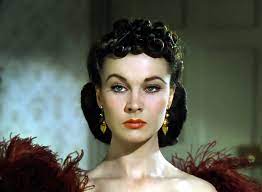 But not all heroes or heroines are so fortunate. And it is, in fact, the emotional baggage they bring to the stories that make them memorable or loveable. Even Scarlet O’Hara had her issues, in love with another woman’s husband and unable to appreciate the love and forbearance of Rhett Butler, who, in the end declares, “Frankly, my Dear, I don’t give a damn.” While Scarlett’s personality is such that she’s a hard woman to love, she is very real and relatable. And everyone can relate to Rhett who gave her everything, but found it wasn’t enough. But not all heroes or heroines are so fortunate. And it is, in fact, the emotional baggage they bring to the stories that make them memorable or loveable. Even Scarlet O’Hara had her issues, in love with another woman’s husband and unable to appreciate the love and forbearance of Rhett Butler, who, in the end declares, “Frankly, my Dear, I don’t give a damn.” While Scarlett’s personality is such that she’s a hard woman to love, she is very real and relatable. And everyone can relate to Rhett who gave her everything, but found it wasn’t enough.
xx
 For most readers, it’s the emotional wounds that make us care about the characters. The kid from the wrong side of town, from a dysfunctional family, who desperately wants to be like everyone else. Or the woman who was abused by a family member and has to overcome that to find love as an adult. The veteran who put his life on the line and comes home to cope with PTSD, his wife and kids, all are victims of an emotional wound that has to be faced and lived with before life can be good again. Some wounds are huge. Some smaller but still affect the lives of those who live with them. For most readers, it’s the emotional wounds that make us care about the characters. The kid from the wrong side of town, from a dysfunctional family, who desperately wants to be like everyone else. Or the woman who was abused by a family member and has to overcome that to find love as an adult. The veteran who put his life on the line and comes home to cope with PTSD, his wife and kids, all are victims of an emotional wound that has to be faced and lived with before life can be good again. Some wounds are huge. Some smaller but still affect the lives of those who live with them.
xx
 When I was a small child, our family had dinner with a relative and on the way home, we were passed by several emergency vehicles, sirens blaring, lights flashing. Then we saw the orange glow in the sky and my dad, always fascinated by the heroism and activity of firemen, followed to see what he could see. Imagine my five-year-old horror at the sight of a house with flames surging from the windows and billows of smoke rising into an evening sky brightly lit by the awful fire. Might not seem much like an emotional wound but I had nightmares for years about my own home going up in flames while I slept at night. Now how might I use such an experience for a protagonist of my own? Perhaps it was a woman who fell in love with a fireman – talk about conflict and adding anxiety she would have to learn how to overcome to make a life with that man. When I was a small child, our family had dinner with a relative and on the way home, we were passed by several emergency vehicles, sirens blaring, lights flashing. Then we saw the orange glow in the sky and my dad, always fascinated by the heroism and activity of firemen, followed to see what he could see. Imagine my five-year-old horror at the sight of a house with flames surging from the windows and billows of smoke rising into an evening sky brightly lit by the awful fire. Might not seem much like an emotional wound but I had nightmares for years about my own home going up in flames while I slept at night. Now how might I use such an experience for a protagonist of my own? Perhaps it was a woman who fell in love with a fireman – talk about conflict and adding anxiety she would have to learn how to overcome to make a life with that man.
xx
 There are dozens of wounds that our protagonists can have. One of the resources I have on my desk is The Emotional Wound Thesaurus – A Writer’s Guide to Psychological Trauma. It has over 100 traumas that people experience and live with including examples from crime and victimization, disabilities and disfigurements, failures and mistakes, injustice and hardship, betrayal, childhood wounds and traumatic events. It’s an amazing resource whether you are creating a character and plot from the beginning or have a basic plot but are looking for a monkey wrench to throw into your protagonist’s life and ability to get to his or her goal. There are dozens of wounds that our protagonists can have. One of the resources I have on my desk is The Emotional Wound Thesaurus – A Writer’s Guide to Psychological Trauma. It has over 100 traumas that people experience and live with including examples from crime and victimization, disabilities and disfigurements, failures and mistakes, injustice and hardship, betrayal, childhood wounds and traumatic events. It’s an amazing resource whether you are creating a character and plot from the beginning or have a basic plot but are looking for a monkey wrench to throw into your protagonist’s life and ability to get to his or her goal.
xx
 Not very many people reach adulthood without some struggle as a kid and most of us don’t get through life without running into trauma of one kind or another. Everyday things like being rear-ended and sent to the hospital which has you scared every time a car gets too close, too fast for years afterward. Not so common like a miscarriage, or being stood up at the altar. Or passed over for a well-deserved promotion at work. Or the really awful ones like losing someone you love in a horrible accident, being raped, living through a plane crash, losing everything you have and ending up on the street. The one thing all these have in common is that as readers we can feel sympathy and want the hero or heroine to find a way to overcome. And that makes readers keep turning pages because they want to experience a happy ending along with the protagonist. And isn’t that what we as authors are shooting for? Not very many people reach adulthood without some struggle as a kid and most of us don’t get through life without running into trauma of one kind or another. Everyday things like being rear-ended and sent to the hospital which has you scared every time a car gets too close, too fast for years afterward. Not so common like a miscarriage, or being stood up at the altar. Or passed over for a well-deserved promotion at work. Or the really awful ones like losing someone you love in a horrible accident, being raped, living through a plane crash, losing everything you have and ending up on the street. The one thing all these have in common is that as readers we can feel sympathy and want the hero or heroine to find a way to overcome. And that makes readers keep turning pages because they want to experience a happy ending along with the protagonist. And isn’t that what we as authors are shooting for?
xx
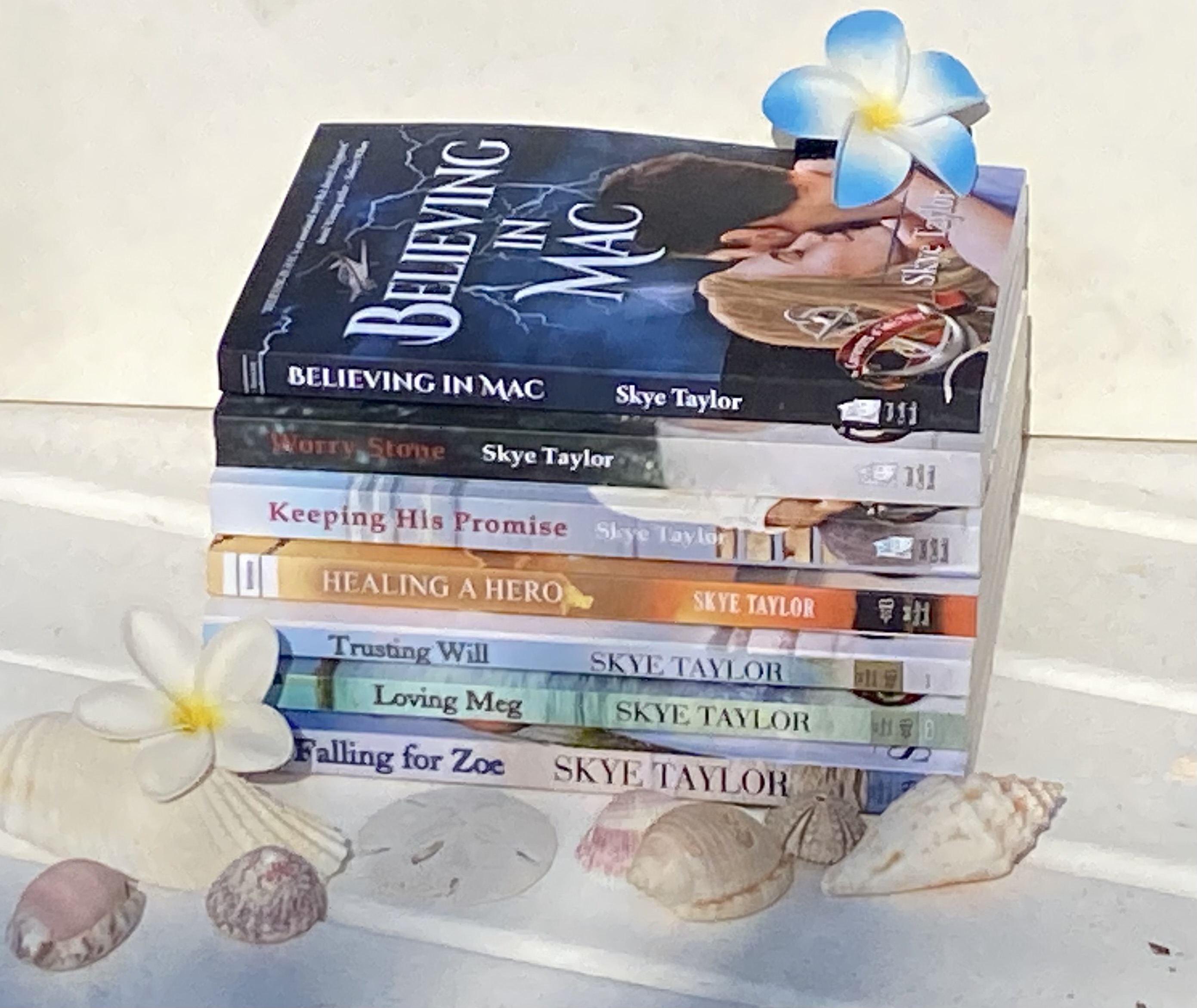 In my romance series I've got a hero and heroine in Healing a Hero who fell in love but due to events beyond their control were separated in such a way that both felt the other had abandoned their relationship and here they are 14 years later, both dealing with that betrayal in spite of being drawn together just as strongly as before. In Loving Meg, my heroine is the one who went to war and comes home to deal with the guilt and trauma and it is the persistent presence of a dog who is also coping with the loss of his police handler who helps her to open up and heal. Falling for Zoe features a heroine who got pregnant but the man she thought loved her wanted no part of having a child or even continuing their relationship. It's a romance though, so she ends up falling in love with a man who already has too many women in his life, but he's the perfect guy to help her make her life whole again. My heroine in Trusting Will is the widow of a soldier and is fearful of giving her heart to another man who puts his life on the line every day as a law enforcement officer. She has to learn that not letting herself love a man is more isolating and painful than taking a chance on love again. In my general fiction, The Candidate, Matt Steele finds himself dealing with the long buried trauma of war years later in the midst of a political campaign for the White House and it is in going back to the emotions and memories he wanted to bury forever that brings understanding and healing. Even in my murder mystery, Bullseye, my heroine, the only female detective on the major crimes squad, is good at her job, but copes with fellow detectives who feel she belongs on patrol, a husband who left her for a younger woman and a teenage daughter who thinks mom knows nothing. All of these traumas are what make my heroes and heroines someone my readers care about and want to see them overcome the obstacles in their lives. In my romance series I've got a hero and heroine in Healing a Hero who fell in love but due to events beyond their control were separated in such a way that both felt the other had abandoned their relationship and here they are 14 years later, both dealing with that betrayal in spite of being drawn together just as strongly as before. In Loving Meg, my heroine is the one who went to war and comes home to deal with the guilt and trauma and it is the persistent presence of a dog who is also coping with the loss of his police handler who helps her to open up and heal. Falling for Zoe features a heroine who got pregnant but the man she thought loved her wanted no part of having a child or even continuing their relationship. It's a romance though, so she ends up falling in love with a man who already has too many women in his life, but he's the perfect guy to help her make her life whole again. My heroine in Trusting Will is the widow of a soldier and is fearful of giving her heart to another man who puts his life on the line every day as a law enforcement officer. She has to learn that not letting herself love a man is more isolating and painful than taking a chance on love again. In my general fiction, The Candidate, Matt Steele finds himself dealing with the long buried trauma of war years later in the midst of a political campaign for the White House and it is in going back to the emotions and memories he wanted to bury forever that brings understanding and healing. Even in my murder mystery, Bullseye, my heroine, the only female detective on the major crimes squad, is good at her job, but copes with fellow detectives who feel she belongs on patrol, a husband who left her for a younger woman and a teenage daughter who thinks mom knows nothing. All of these traumas are what make my heroes and heroines someone my readers care about and want to see them overcome the obstacles in their lives.
XX
 Check out my fellow Round Robin Bloggers for their take on the topic of the month. Check out my fellow Round Robin Bloggers for their take on the topic of the month.
XX
Connie Vines
Dr. Bob Rich
Fiona McGier
Marci Baun
Victoria Chatham
Saturday, April 22 2023
Breathing Life into your Characters
 XX XX
April is here and things are blooming everywhere, so, our Round Robin Blog Hoppers are discussing how they make their characters to spring into life.
XX
With a few rare exceptions where the action is the WHOLE story, it’s the characters that draw me into a good book and keep me turning pages. I want to become invested in the people between the pages. I want to cheer them on, cry with them, care about their relationships and lives. And I want them to be happy and satisfied with the outcome on the last page. But to make me care, the author has to make those characters real. Paper dolls and characters with no character, just don’t cut it.
XX
I did a workshop on this topic recently and I asked the authors attending the presentation to take a moment to think about their favorite characters from the book or TV series they loved and eagerly looked forward to every new installment. Or think about a book they’ve read at any point in their life where the main character claimed them and they’ve never forgotten the character, perhaps even years later.
XX
For me that goes back a long way. As a child I was in love with Heidi. I wanted to be Heidi. I wanted to live on that mountain with the Grandfather and Peter. I still recall how deeply I cared, so what made me care, and still remember all these years later? Because Johanna Spyri made me care about Heidi. A 5-year old orphan who is taken by her aunt to live with her reclusive grandfather far away from the village and anything she’s ever known in her short life. How could you not care about her? But she’s cheerful and friendly. She falls in love with Peter and his goats and begs to go up the mountain with them every day. A carefree lifestyle most kids who are tied to school and routine would envy. Heidi wins over the grumpy old grandfather along with her readers.
XX
Well, I’m no longer a child, and I’ve become a little more demanding in what kind of characters grab my attention and devotion. I don’t want to read about billionaires or super models without a care in the world. I’m not drawn to characters I can’t get into the hearts and minds of. An example of what draws me might be the comparison between Kensi Blye and Marty Deeks on NCIS LA.
 XX XX
Kensi is a bigger than life heroine. She is fluent in Portuguese, French, Spanish, Japanese. She knows Morse code and can lip read. She’s an ace sniper, excellent tracker. She can fix engines, plays poker, knows how to wire a house. She can and does defeat men twice her size in physical combat. In fact, she’s almost too big to be believable. But where are her flaws? Mostly she comes across as invincible.
XX
Then there’s Marty, who begins in the series as a borrowed undercover officer from LAPD. With his scruff and unkempt blond hair he looks more like a surfer than a cop or an NCIS agent. He has an almost boyish attitude and a quirky sense of humor. He gets beat up on occasion and is sometimes treated as the odd man out, which he spends a good deal of time trying to overcome. And yet – he comes across to me (the reader or TV watcher) as more believable than his partner Kensi. I find myself rooting for him far more often than for Callen or even Sam Hanna when the chase is on. And I’m only concerned about Kensi because Deeks loves her and anything that hurts her, hurts Deeks.
XX
 One heroic character that has become an international phenomenon and even if you haven’t watched the Outlander series or read the books, you may still have heard of him. Jamie Fraser. Do a brief search on social media and you’ll quickly find what drives his popularity. A short list includes: honorable, loyal, loving, faithful, passionate, romantic, brave, flawed, funny, vulnerable and the way he treats Claire. One heroic character that has become an international phenomenon and even if you haven’t watched the Outlander series or read the books, you may still have heard of him. Jamie Fraser. Do a brief search on social media and you’ll quickly find what drives his popularity. A short list includes: honorable, loyal, loving, faithful, passionate, romantic, brave, flawed, funny, vulnerable and the way he treats Claire.
He’s educated, a soldier, a laird, brother, son, and leader – and yet at the start of the first book, he is barely into his 20s. He is an outlaw wanted by the British but revered by the Scots. Personally, he is both a keen observer of those around him, fiercely loyal, and willing to be openly emotional. He is scarred, both physically (from beatings his nemesis Jack Randall loves to inflict on him) and emotional. When he falls in love with time traveler, Clair, that brings a whole new raft of vulnerabilities to what started out as a wounded, yet independent young warrior. In the author ‘s own words: “Jamie was created by a woman to be simultaneously masculine, yet vulnerable. Someone you could trust with your life and feel compelled to care for. Innocent yet wise, capable of showing emotion. Takes responsibility for his mistakes, is fiercely loyal devoted and loyal.
XX
That’s the kind of character that draws me into the story right from the start and keeps me there, eager for the next chapter, reluctant to put the book down, and on the last page feeling as if my best friend just moved a thousand miles away.
XX
 Comedy is a whole other world. One doesn’t have to be a Kensi Blye. But still, consider over the years, what makes a comedic character of either sex compelling. It’s their FLAWS! Dick Van Dyke could trip over his own feet, or Lucille Ball who half the time had her foot in her mouth. Barney Fife who’s afraid of his own shadow. Writing comedy is a Comedy is a whole other world. One doesn’t have to be a Kensi Blye. But still, consider over the years, what makes a comedic character of either sex compelling. It’s their FLAWS! Dick Van Dyke could trip over his own feet, or Lucille Ball who half the time had her foot in her mouth. Barney Fife who’s afraid of his own shadow. Writing comedy is a  craft very different from suspense, mystery, or drama, but the characters still have to be compelling with both admirable and flawed characteristics to make them believable beyond the caricature! Think of Sheldon Cooper on the Big Bang Theory who is the so over the top Brainiac, but struggles with personal relationships and OCD tendencies. Or Sally Albright in the movie When Harry Met Sally who is equally flawed, yet captured instant attention by proving a woman could fake an orgasm that a man would never know wasn’t real – in the middle of a restaurant and embarrassing Harry completely. The fun is in the flaws as well as the strengths. In fact, neither of these characters would be compelling without their flaws. craft very different from suspense, mystery, or drama, but the characters still have to be compelling with both admirable and flawed characteristics to make them believable beyond the caricature! Think of Sheldon Cooper on the Big Bang Theory who is the so over the top Brainiac, but struggles with personal relationships and OCD tendencies. Or Sally Albright in the movie When Harry Met Sally who is equally flawed, yet captured instant attention by proving a woman could fake an orgasm that a man would never know wasn’t real – in the middle of a restaurant and embarrassing Harry completely. The fun is in the flaws as well as the strengths. In fact, neither of these characters would be compelling without their flaws.
XX
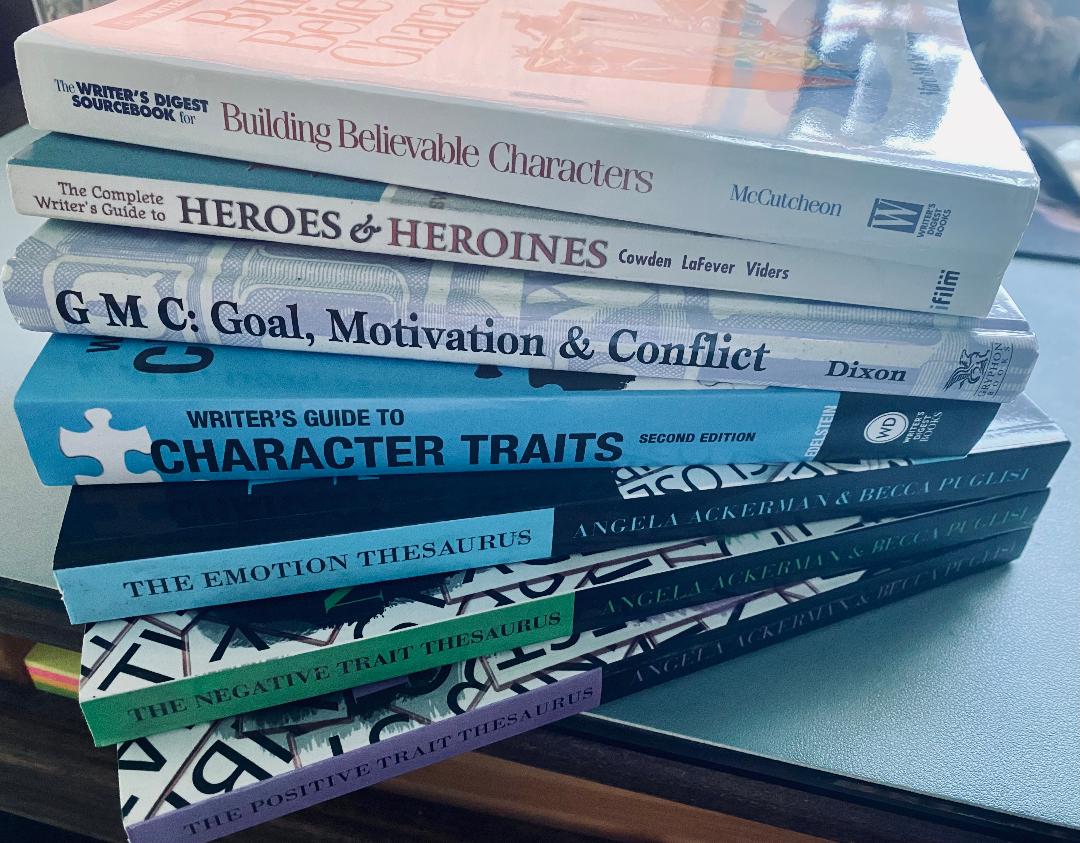 So, where do you begin to find these flaws. I have a whole shelf of books to consult, but I might start with people I know. I never copy a specific individual, but I might borrow their mannerisms, faults, habits and speech. There are people in the news with a vast array natures, behaviors and dispositions I’ve never encountered personally. And when there are holes still to fill, I have a whole shelf of books to consult. A series of books – The Writer’s Guide Thesauruses, that includes Character Flaws, Negative Traits, Positive Traits, Careers and Psychological Traumas. (This last one is a great way to figure out WHY your character came by his or her flaw, or what drives them to behave the way they do.) My shelf also has Heroes & Heroines – Sixteen Master Archetypes, Building Believable Characters – by Marc McCutcheon So, where do you begin to find these flaws. I have a whole shelf of books to consult, but I might start with people I know. I never copy a specific individual, but I might borrow their mannerisms, faults, habits and speech. There are people in the news with a vast array natures, behaviors and dispositions I’ve never encountered personally. And when there are holes still to fill, I have a whole shelf of books to consult. A series of books – The Writer’s Guide Thesauruses, that includes Character Flaws, Negative Traits, Positive Traits, Careers and Psychological Traumas. (This last one is a great way to figure out WHY your character came by his or her flaw, or what drives them to behave the way they do.) My shelf also has Heroes & Heroines – Sixteen Master Archetypes, Building Believable Characters – by Marc McCutcheon
Characters Emotional and Viewpoint – by Nancy Kress and Creating Character Arcs – by K. M. Weiland
XX
 That Character ARC is another important part of creating characters who resonate. Another invaluable resource is Goal, Motivation & Conflict by Debra Dixon. What does your character want? Why do they want it? And what stumbling blocks are in their way? Filling out a GMC chart for your character will help to bring their character arc into play. And it also helps to show where the weak places in your character’s make up might be. That Character ARC is another important part of creating characters who resonate. Another invaluable resource is Goal, Motivation & Conflict by Debra Dixon. What does your character want? Why do they want it? And what stumbling blocks are in their way? Filling out a GMC chart for your character will help to bring their character arc into play. And it also helps to show where the weak places in your character’s make up might be.
XXX
And don’t forget the conflict between your characters that heightens both their strengths and the weaknesses. Sheldon Cooper is surrounded by a group of friends, each with their own personality that his either clashes with or is highlighted by. And the interaction between them shows off what kind of person he is. By himself, he appears to be a super smart guy with obsessive habits, but because of the rest of the cast we see into his caring side. When he worries about Raj, or Penny, and argues with Leonard or Amy, that lets the viewer see deeper into his personality and makes him a character you can care about.
XXX
 So, how are we going to make sure our stories and characters are just as compelling? Start with the things about YOUR favorite characters that you find compelling, loveable or the opposite. You’ll probably find pretty quickly that you did not describe them physically right at the start. In fact, physical appearance might or might not change as you develop other characters. For the most part, I’m betting you wrote down things like I mentioned before about the well-known fictional characters. So, how are we going to make sure our stories and characters are just as compelling? Start with the things about YOUR favorite characters that you find compelling, loveable or the opposite. You’ll probably find pretty quickly that you did not describe them physically right at the start. In fact, physical appearance might or might not change as you develop other characters. For the most part, I’m betting you wrote down things like I mentioned before about the well-known fictional characters.
XXX
 How important is it to dig deep into secondary characters? Ask yourself, Do they serve a purpose? Do they drive the plot or are they just placeholders. Sometimes characters like the waiter shouldn’t even get a name, never mind a character outline. Unless it’s a small-town diner where the waitress knows you and everyone else in town by name. But if your secondary characters are going to move your plot or your heroine, they need to have careful thought put into them as well, emphasizing those characteristics they have that impact your main characters or the story. How important is it to dig deep into secondary characters? Ask yourself, Do they serve a purpose? Do they drive the plot or are they just placeholders. Sometimes characters like the waiter shouldn’t even get a name, never mind a character outline. Unless it’s a small-town diner where the waitress knows you and everyone else in town by name. But if your secondary characters are going to move your plot or your heroine, they need to have careful thought put into them as well, emphasizing those characteristics they have that impact your main characters or the story.
XX
 What about Villains and antagonists? A villain needs to be just as compelling as your hero to make the conflict believable. The antagonist just needs to make waves and disagree with your hero and heroine. Both are stumbling blocks. They might be unpredictable, sociopathic, narcissistic or use fear to get their way, but they MUST HAVE REASONS – Revenge, Hate, Greed, Sex, Drugs for a few examples. Allow your reader to feel some connection to your villain. Maybe they are motivated by Religion, A need to be liked or a Need for attention What about Villains and antagonists? A villain needs to be just as compelling as your hero to make the conflict believable. The antagonist just needs to make waves and disagree with your hero and heroine. Both are stumbling blocks. They might be unpredictable, sociopathic, narcissistic or use fear to get their way, but they MUST HAVE REASONS – Revenge, Hate, Greed, Sex, Drugs for a few examples. Allow your reader to feel some connection to your villain. Maybe they are motivated by Religion, A need to be liked or a Need for attention
XX
 Basic villain types include: The Classic villain (Sociopath, self-interest, Rules don’t apply to him and Not redeemable) The Supernatural villain who uses sorcery or has some special paranormal power But this villain must have a weakness like Superman’s Kryptonite. The Bond Villain who is Rich, Powerful, Larger than Life, Has a following of henchmen, Enjoys the crime or is an Egomaniac. And of course, Rivals like the Evil Twin, the Femme Fatale or the Bully. Basic villain types include: The Classic villain (Sociopath, self-interest, Rules don’t apply to him and Not redeemable) The Supernatural villain who uses sorcery or has some special paranormal power But this villain must have a weakness like Superman’s Kryptonite. The Bond Villain who is Rich, Powerful, Larger than Life, Has a following of henchmen, Enjoys the crime or is an Egomaniac. And of course, Rivals like the Evil Twin, the Femme Fatale or the Bully.
XX
The most important part of your story, unless you’re Lee Child, are the characters, so take the time to make them real, compelling, and memorable. Things to remember about ALL your characters’ flaws and strengths – there NEEDS TO BE A REASON
 XX XX
Try asking yourself how other writers have convinced you to care about your favorite characters. What did they show you about that character that made them so compelling and HOW did they show it. Backstory dumps are a huge no-no so don’t use this to tell your readers why your character is what he or she is. Find ways to show the reader in the action, in how they relate to other characters, or how they react to love, threats, sadness etc.
XX
One last hint I’ll leave you with – after you’ve created your character, pretend you are a reporter for the local paper and interview your character as if you will be writing a feature article for this Sunday’s paper. Ask the tough personal questions. Dig for dirt. Make them squirm. Make them explain their goals and why they are so important. If you know your character this well, he or she will shine in the story you are writing.
XX
Time to visit the rest of our Round Robin Authors and find out how they create great characters.
XX
 Anne Stenhouse Anne Stenhouse
Connie Vines
Diane Bator
Dr. Bob Rich
Fiona McGier
Marci Baun
Victoria Chatham
A.J. Maguire
Helena Fairfax
Judith Copek
Friday, March 17 2023
Our Round Robin Blog Hop for March is: The Importance of your character's backstory/history and how to share this with the reader.
xx
 Backstory is what gives both the characters and the plot depth and meaning. Without it, neither the author nor the reader really knows who the characters are or why the story is going where it’s going. We’ve all read books that seem totally shallow, mere vehicles for violence or sex or sometimes humor but without much character growth or story arc. But, thankfully, most authors do know their character’s backstory. So, then the question becomes how much should the author reveal? When? And how? We’ve all come across books with major info dumps, and that’s just as much of a story killer. Backstory is what gives both the characters and the plot depth and meaning. Without it, neither the author nor the reader really knows who the characters are or why the story is going where it’s going. We’ve all read books that seem totally shallow, mere vehicles for violence or sex or sometimes humor but without much character growth or story arc. But, thankfully, most authors do know their character’s backstory. So, then the question becomes how much should the author reveal? When? And how? We’ve all come across books with major info dumps, and that’s just as much of a story killer.
xx
If the author decides there is so much “important stuff” about their characters that the reader just has to know ahead of time, they often decide on a prologue. That can work both ways. Some people ignore prologues and just flip pages to chapter 1. They then miss the things that drive the character to make the decisions they make and leave the reader scratching his head wondering “why?”  This habit also leaves the reader in the dark about the character’s growth, healing, or resolution of past issues that had been holding them back. But some editors and readers love prologues for all the information they can deliver. Your choice. This habit also leaves the reader in the dark about the character’s growth, healing, or resolution of past issues that had been holding them back. But some editors and readers love prologues for all the information they can deliver. Your choice.
xx
Another story killing option is to save it for chapter one and just lay it all out there on the first few pages or even chapters. Unfortunately this can end with the reader putting the book aside. No action, nothing happening = no hook. Even if they keep reading and finish, when they post a review it will nearly always begin with something like – “It was a good story, but it started slow.” “Or I had a hard time getting into the story.” So, not your best option.
xx
So, if prologues and info dumps are both iffy choices, how does the author tell the reader the important parts of a character’s backstory, or the events leading up to and causing the inciting incident in the plot?
 xx xx
The first thing to remember is that while you know, or should know, your characters as well as you know yourself or at least your best friend, not everything you know about them needs to appear in the story. For instance, maybe your hero had his tonsils out when he was five. Traumatic for a five-year old, especially when he’s been promised all the ice cream he wants when the surgery is over and then discovers his throat hurts so much he doesn’t want any ice cream. But your hero is now  32 and he’s a soldier or a fireman, his disappointment over the ice cream issue has no bearing on the choices he makes today and this tid-bit, however amusing, isn’t important. UNLESS – another part of the five-year-old experience was terror on waking from the anesthesia and finding a bunch of masked strangers hanging over him. And now he’s been wounded either in the theater or war, or putting his life on the line to save another human from a burning building. If he was almost immediately unconscious, now he’s going to wake up from the anesthesia with absolutely no idea where he is, who these people are or what happened to him and a flash back has him panicking again. So, maybe that five-year-old experience does make a difference. 32 and he’s a soldier or a fireman, his disappointment over the ice cream issue has no bearing on the choices he makes today and this tid-bit, however amusing, isn’t important. UNLESS – another part of the five-year-old experience was terror on waking from the anesthesia and finding a bunch of masked strangers hanging over him. And now he’s been wounded either in the theater or war, or putting his life on the line to save another human from a burning building. If he was almost immediately unconscious, now he’s going to wake up from the anesthesia with absolutely no idea where he is, who these people are or what happened to him and a flash back has him panicking again. So, maybe that five-year-old experience does make a difference.
xx
  What if your heroine’s father had been an alcoholic and now the man she has only recently met and started dating turns out to be a heavy drinker – was her father mean when he drank? Or did he just pass out in front of the TV each night? Those two different options would have an impact on decisions your heroine might make about continuing to date this guy. Maybe your protagonist had a double major in college. This could mean they are super smart, super hard working, or super determined to succeed. All three do have some input into your protagonist’s personality, drive and work ethic, but unless he’s now in a race to figure out how to stop a virulent new virus from infecting millions, his other major in biology might not be important. Certainly not important enough to discuss all the classes that were needed to follow that course of study. What if your heroine’s father had been an alcoholic and now the man she has only recently met and started dating turns out to be a heavy drinker – was her father mean when he drank? Or did he just pass out in front of the TV each night? Those two different options would have an impact on decisions your heroine might make about continuing to date this guy. Maybe your protagonist had a double major in college. This could mean they are super smart, super hard working, or super determined to succeed. All three do have some input into your protagonist’s personality, drive and work ethic, but unless he’s now in a race to figure out how to stop a virulent new virus from infecting millions, his other major in biology might not be important. Certainly not important enough to discuss all the classes that were needed to follow that course of study.
xx
So, picking and choosing the important bits from your character’s pasts aka backstory is the first step. Now the question is – how?
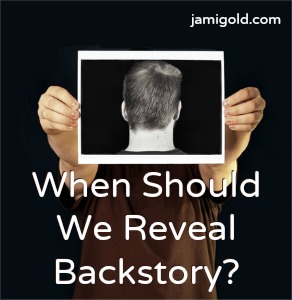
Several options. Dialog. Your double-major protagonist is reading a recently published and much discussed book on Covid and other variant viruses and another character shows up and says, “Good grief, Matt! I thought you swore you were never going to read another science book in your life.” And Matt’s response can tell the reader a bit depending on the reasons for reading it. If he is working on a task force to find out where another new virus came from, then he might say something along the lines of, “Yeah, I did say that, but those books were all about human bugs we had already conquered. And when I joined the FBI I had no plans to ever think about medicine again.” So, now you’ve told the reader he studied this in college, never planned a career in the field, as well as the career he did choose if the reader doesn’t already know that. But perhaps he’s FBI, but on a task force that has nothing to do with biology or the story. His reply might be something like, “I know, but Linda gave me this book and told me I just had to read it. So, I’m reading it.” The topic moves on, the reader knows he studied biology but it’s not critical now.
xx
 A similar way to inform the reader of the same information might be inside your character’s head. He’s digging frantically through this book, hoping to find a clue he never got from all the hundreds of books he had to read to pass his double major. Or, he’s listlessly turning pages hoping to find just enough fun facts to share with Linda so she doesn’t get pissed with him for not reading the book. This would also work with your firefighter who is slowly coming to and realizing something bad has happened. Memories of being so small he only took up half the gurney and being totally scared by all the strangers surrounding him. Only this time those strangers are anxiously working on him, monitors are beeping, everyone is intent on serious tasks, but the panic is the same. A similar way to inform the reader of the same information might be inside your character’s head. He’s digging frantically through this book, hoping to find a clue he never got from all the hundreds of books he had to read to pass his double major. Or, he’s listlessly turning pages hoping to find just enough fun facts to share with Linda so she doesn’t get pissed with him for not reading the book. This would also work with your firefighter who is slowly coming to and realizing something bad has happened. Memories of being so small he only took up half the gurney and being totally scared by all the strangers surrounding him. Only this time those strangers are anxiously working on him, monitors are beeping, everyone is intent on serious tasks, but the panic is the same.
xx
And then there’s action. Your character is involved with an activity they’ve done so many times they could do it in their sleep would give your reader a hint to your character’s back story, and this can segue into his conscious thoughts about what he’s doing, why he’s doing it and where  he learned how. What if your heroine is a nurse who has been doing rounds in a nursing home. When she comes to the old man’s bed he tries to reach out to her but his hand falls back to the sheet and his eyes seem to plead with her to understand he needs her. She’d seen that look before. When her grandfather had been failing but insisted on living out his days in his own home. Their family couldn’t afford round the clock nursing so they’d taken turns being with him. And it had been her turn the night he’d passed from this life to the next. He’d reached out to her just like that but his failing strength had caused him to miss the connection. She’d been younger then. She’d tried to guess what he needed. You need a drink. Her grandfather had shaken his head, a weak almost not there movement. She’d tried a bunch of other things. But every option she’d given him had been a similar no. So, she’d clutched at the weak, wrinkled hand, folding it into both her own with no idea what to do next. And her grandfather had sighed, his fingers trembling in hers and his mouth turned up in a small smile as he closed his eyes and his breathing faded away. All he’d needed was touch. The touch of another person in those last moments of life. So, now Jean reaches behind her and pulls a chair up to sink into as she lifts the man’s hand into her own and cradles it with warmth and caring. Now the reader knows important bits of her history as well as a lot about the kind of person she is. he learned how. What if your heroine is a nurse who has been doing rounds in a nursing home. When she comes to the old man’s bed he tries to reach out to her but his hand falls back to the sheet and his eyes seem to plead with her to understand he needs her. She’d seen that look before. When her grandfather had been failing but insisted on living out his days in his own home. Their family couldn’t afford round the clock nursing so they’d taken turns being with him. And it had been her turn the night he’d passed from this life to the next. He’d reached out to her just like that but his failing strength had caused him to miss the connection. She’d been younger then. She’d tried to guess what he needed. You need a drink. Her grandfather had shaken his head, a weak almost not there movement. She’d tried a bunch of other things. But every option she’d given him had been a similar no. So, she’d clutched at the weak, wrinkled hand, folding it into both her own with no idea what to do next. And her grandfather had sighed, his fingers trembling in hers and his mouth turned up in a small smile as he closed his eyes and his breathing faded away. All he’d needed was touch. The touch of another person in those last moments of life. So, now Jean reaches behind her and pulls a chair up to sink into as she lifts the man’s hand into her own and cradles it with warmth and caring. Now the reader knows important bits of her history as well as a lot about the kind of person she is.
xx
 There are other ways to introduce back story that are great but be careful not to overdo them. Unless you’re writing a memoir, you wouldn’t include pages from a diary or letters from the past more than a couple times in a book of fiction, but they can be a great way to tell an important story from the past that motivates the character now. There are other ways to introduce back story that are great but be careful not to overdo them. Unless you’re writing a memoir, you wouldn’t include pages from a diary or letters from the past more than a couple times in a book of fiction, but they can be a great way to tell an important story from the past that motivates the character now.
xx
A character’s reaction to something. Like seeing blue lights flashing behind him on the road. The average driver just pulls over and waits for the police car to pass. But what if your guy breaks out into a sweat. The last time he saw lights like that, it hadn’t ended well. Okay, here’ a bit of the character’s history that might need telling. Maybe in a flashback?
xx
 Dreams are another option for revealing backstory in the course of your novel. Or your heroine is having coffee with her friend and decides it’s time to tell the friend why she’d dropped out of high school before graduating. Getting pregnant had been a bombshell. Her religious belief precluded abortion. Her boyfriend turned his back on her. Her parents kicked her out of the house. So, she’d gone to live with an aunt in another state until her baby was born and put up for adoption. In the telling of this story, she can reveal not only to her friend, but to the reader, a huge chunk of her backstory that impacts the decisions she makes today. Dreams are another option for revealing backstory in the course of your novel. Or your heroine is having coffee with her friend and decides it’s time to tell the friend why she’d dropped out of high school before graduating. Getting pregnant had been a bombshell. Her religious belief precluded abortion. Her boyfriend turned his back on her. Her parents kicked her out of the house. So, she’d gone to live with an aunt in another state until her baby was born and put up for adoption. In the telling of this story, she can reveal not only to her friend, but to the reader, a huge chunk of her backstory that impacts the decisions she makes today.
xx
There are lots of ways to introduce backstory without dumping it all on the reader at the start of the story. It just takes a little patience to decide where and when. And never let it slow the current pacing of the story. One way to know if you’ve included all the important things or dumped too much after you’ve finished your first draft is to find a beta reader or three to just read. Not to critique the work, but just read and come back with comments, gut reactions, or questions. If you’re beta reader comes back with a question like, “I loved your hero Mikey, but  why on earth did he turn down that job offer?” Then you know there was backstory you were totally familiar with but failed to share in some way with the reader that was important to this decision. Another time the beta reader might suggest that the story is really confusing, or is so slow at the start that they wouldn’t have read it except they promised you they would. Now you have a hint in the first instance that there is some bit of history that needed telling that would have explained the confusing part and in the second instance, that you’ve dumped so much info at once that you dragged the action to a halt. Not every suggestion a beta reader offers needs to be incorporated but listen with an open mind. Sometimes we’ve been so close to the story as it unfolds we miss things someone with fresh eyes sees right off. While most authors are also readers, you are writing for readers so never discount what an ordinary reader might have to offer. They know what they like and enjoy and what turns them off. why on earth did he turn down that job offer?” Then you know there was backstory you were totally familiar with but failed to share in some way with the reader that was important to this decision. Another time the beta reader might suggest that the story is really confusing, or is so slow at the start that they wouldn’t have read it except they promised you they would. Now you have a hint in the first instance that there is some bit of history that needed telling that would have explained the confusing part and in the second instance, that you’ve dumped so much info at once that you dragged the action to a halt. Not every suggestion a beta reader offers needs to be incorporated but listen with an open mind. Sometimes we’ve been so close to the story as it unfolds we miss things someone with fresh eyes sees right off. While most authors are also readers, you are writing for readers so never discount what an ordinary reader might have to offer. They know what they like and enjoy and what turns them off.
xx
Thanks for taking the time to read my blog, and for a few other perspectives, visit my fellow Round Robin Blog Hoppers to see what they have to say about backstory.
xx

Connie Vines
A.J. Maguire
Dr. Bob Rich
|